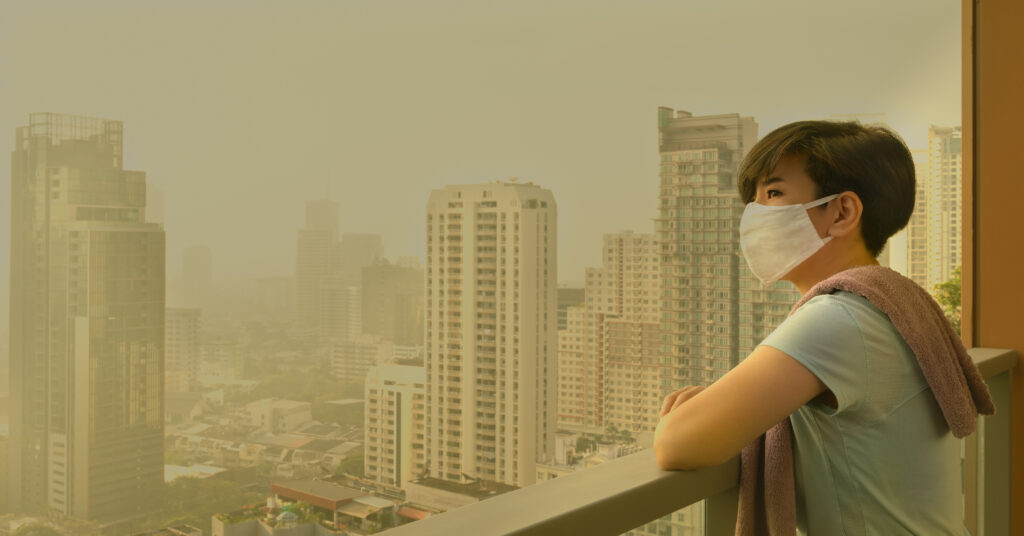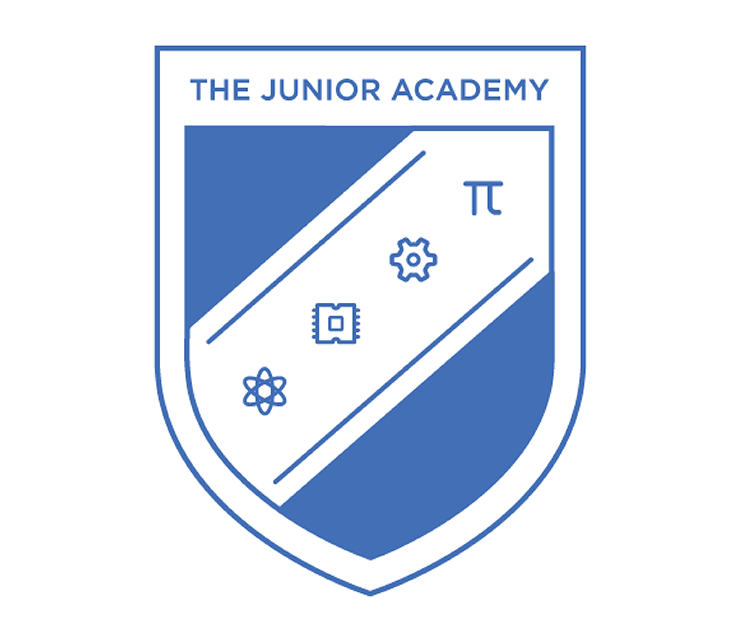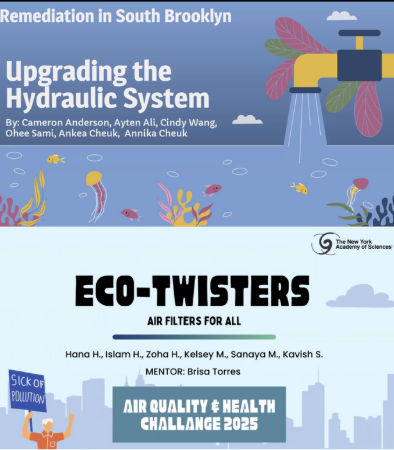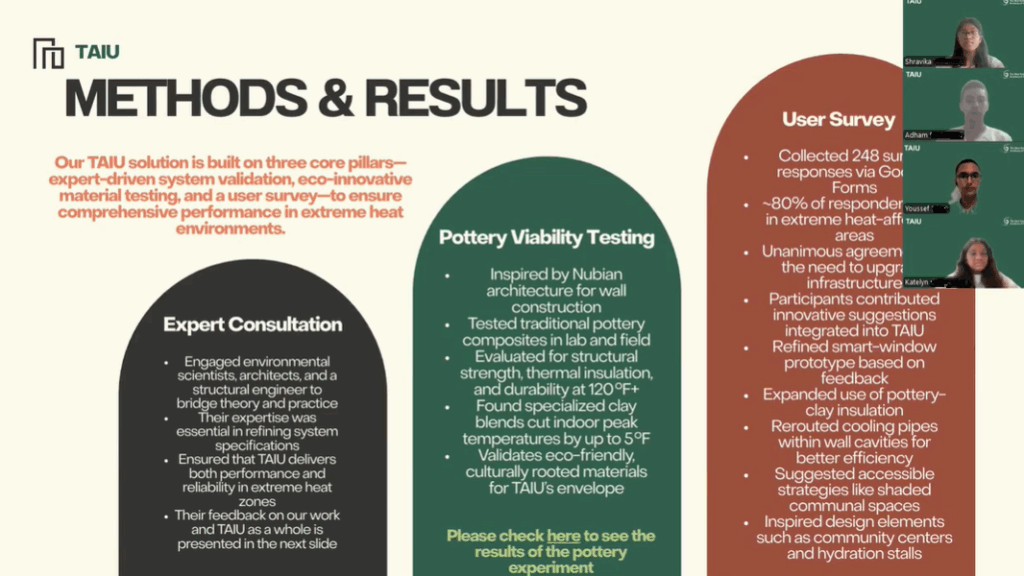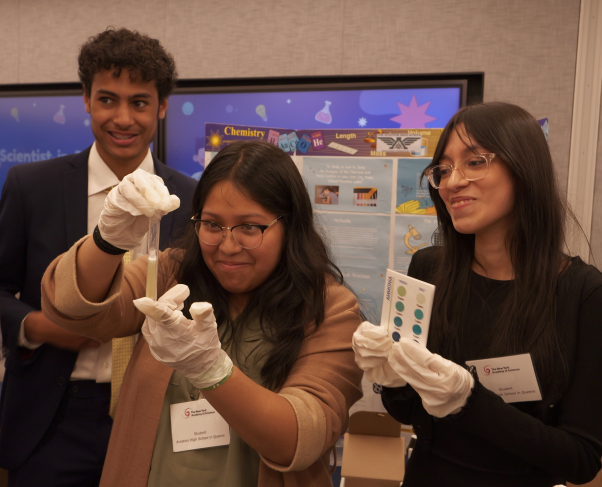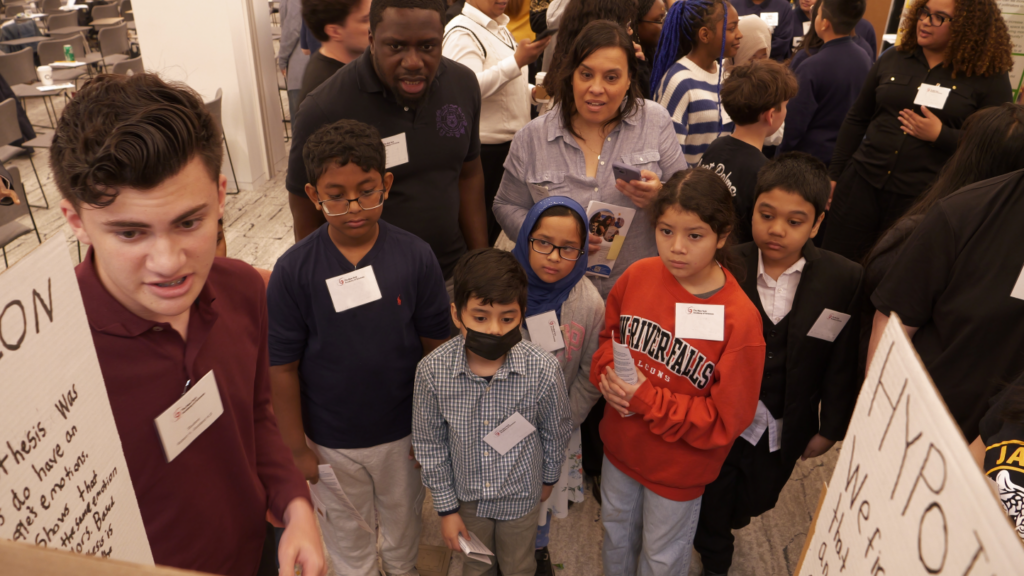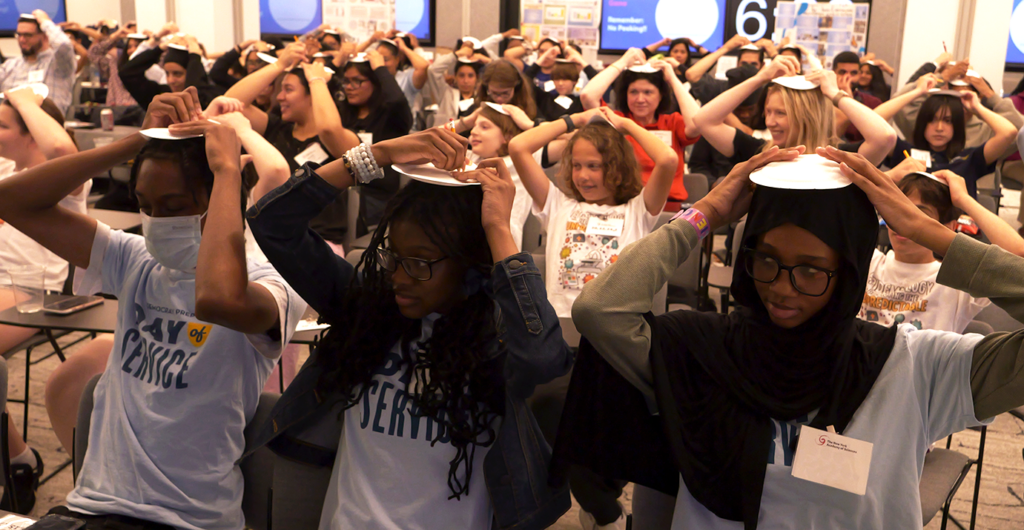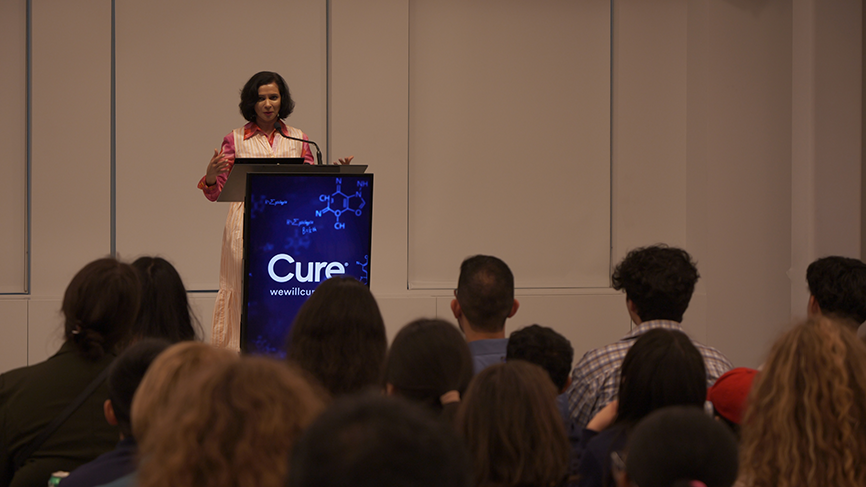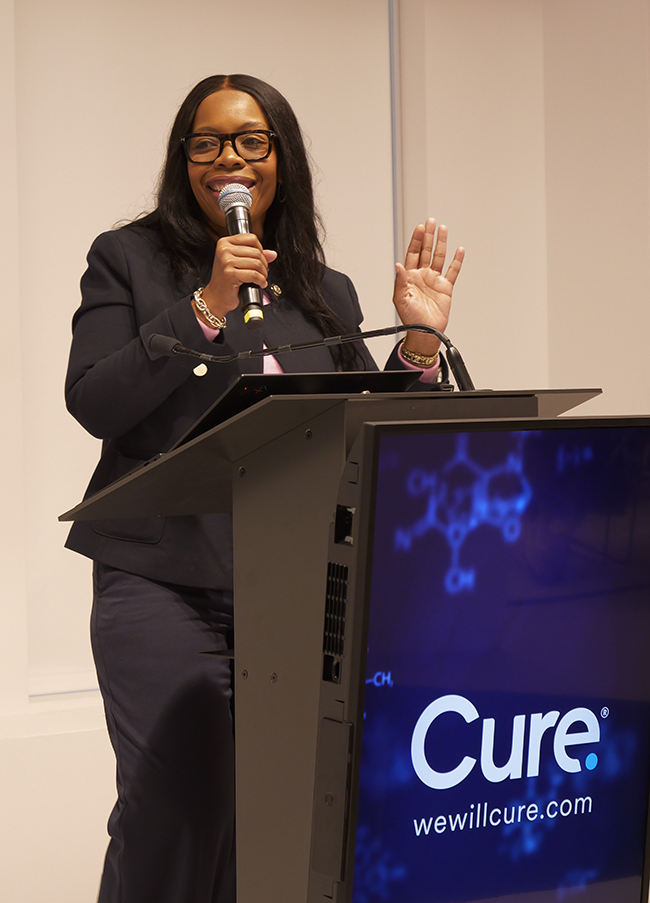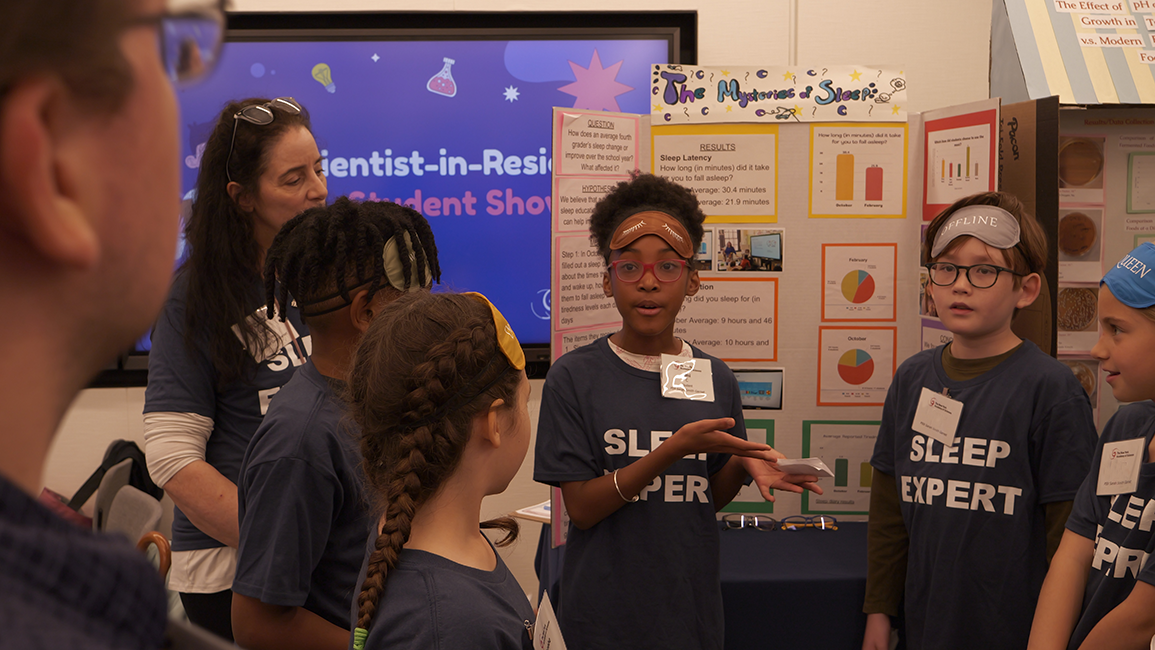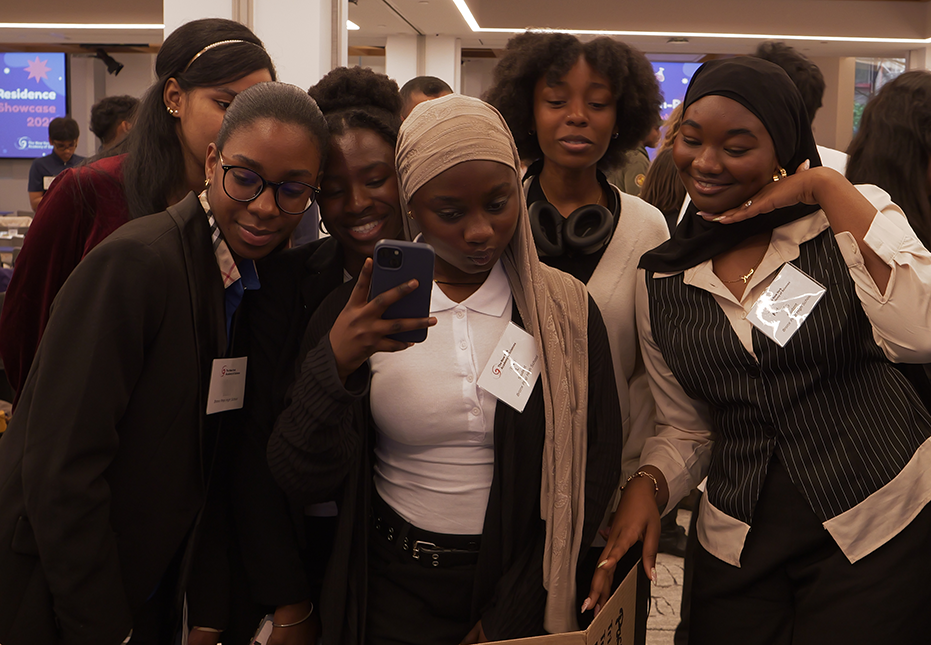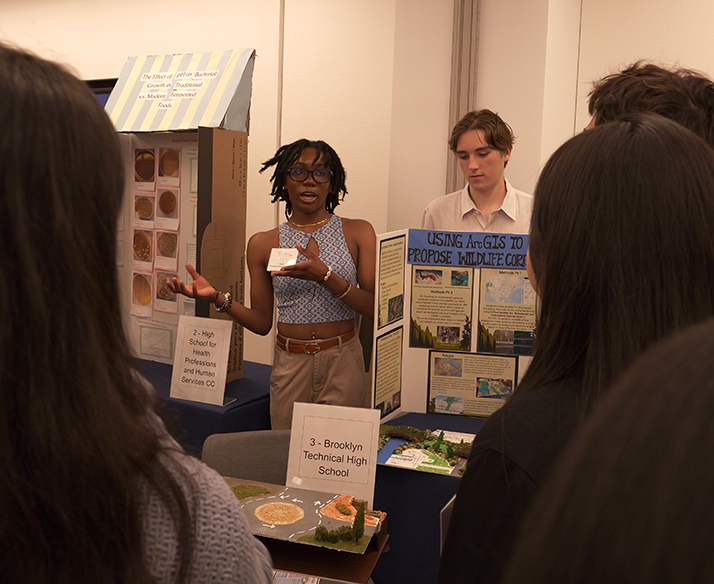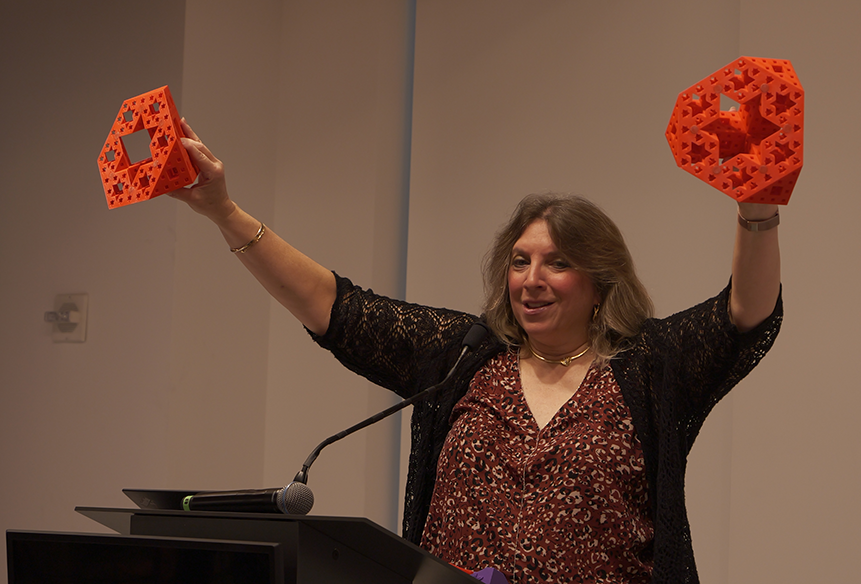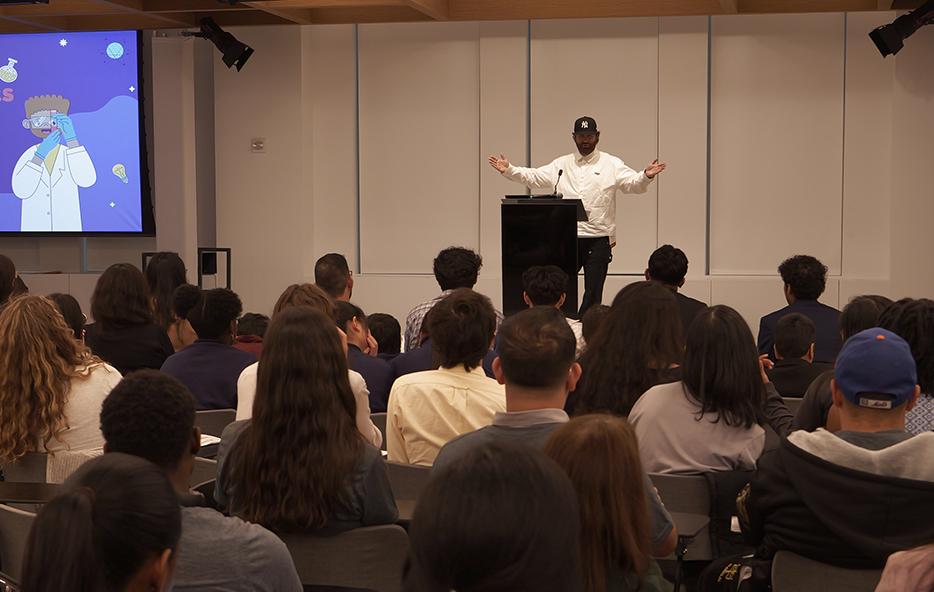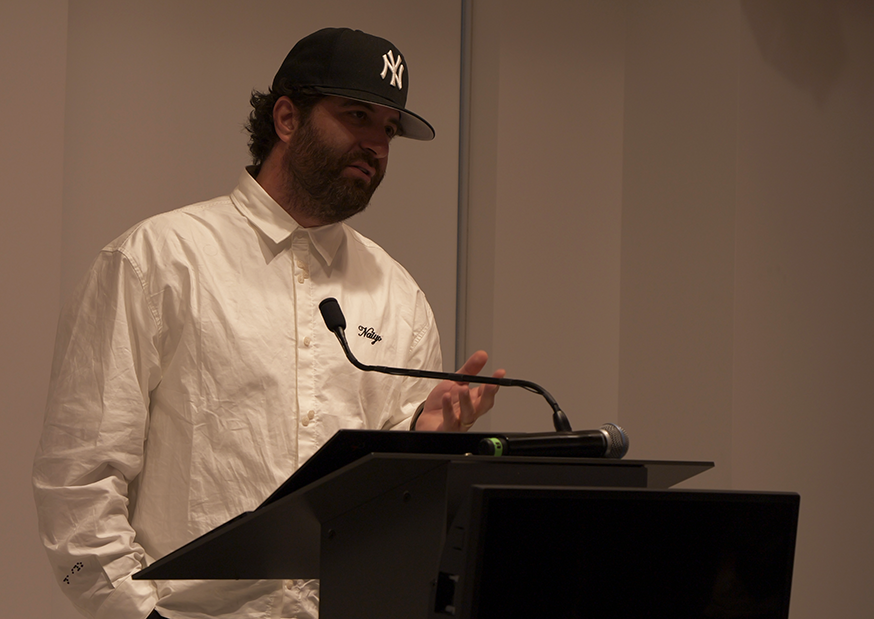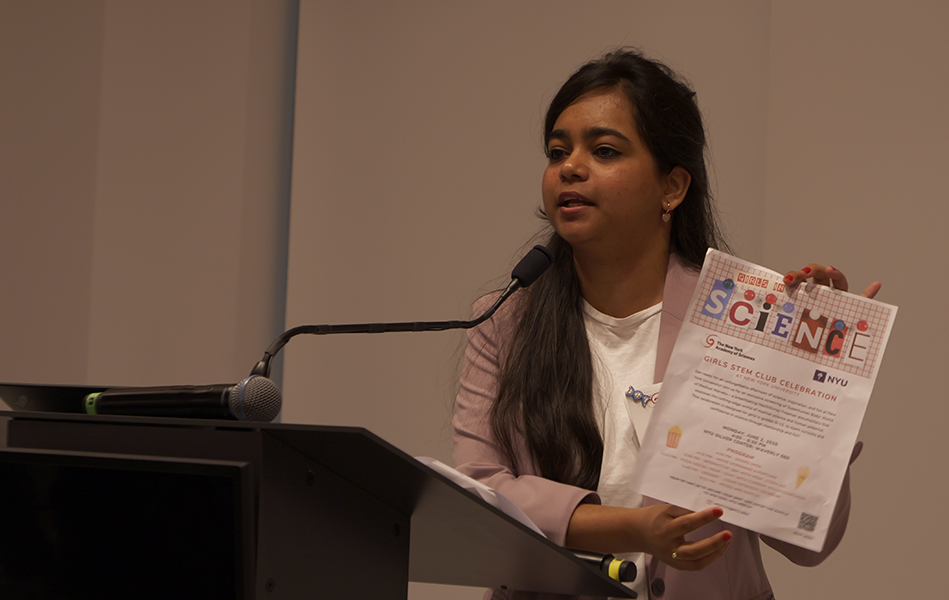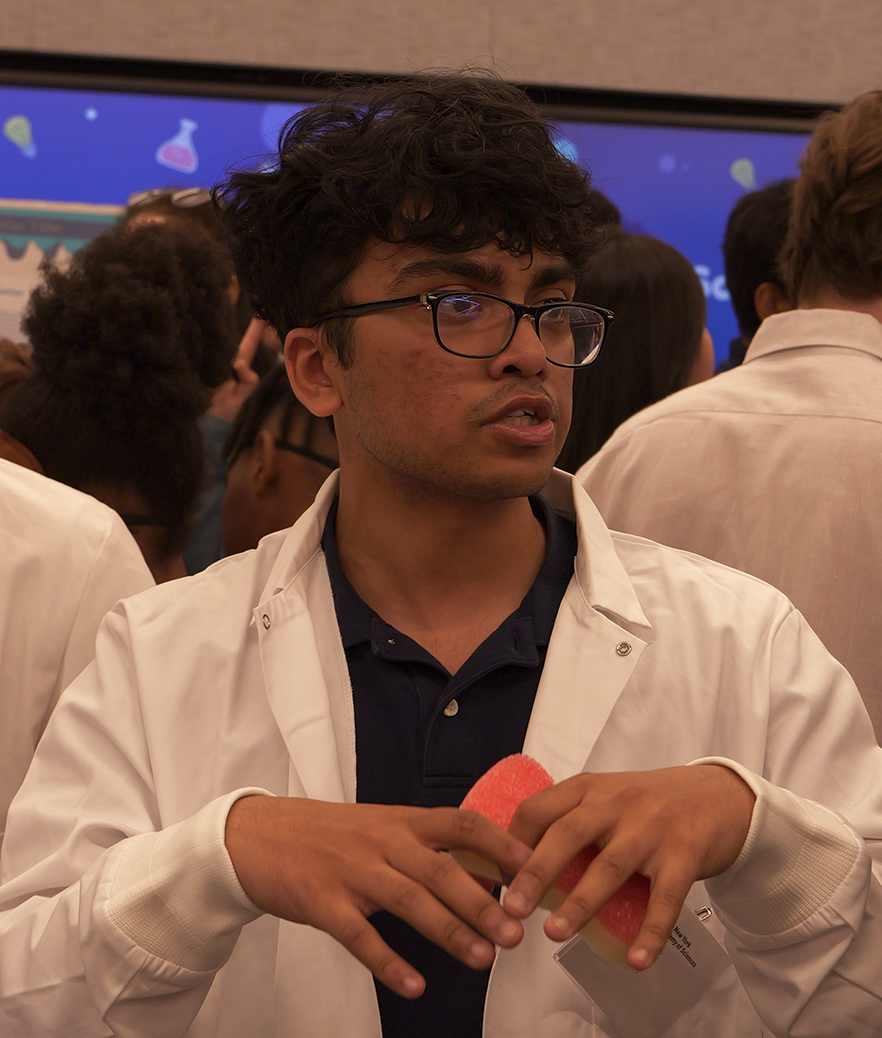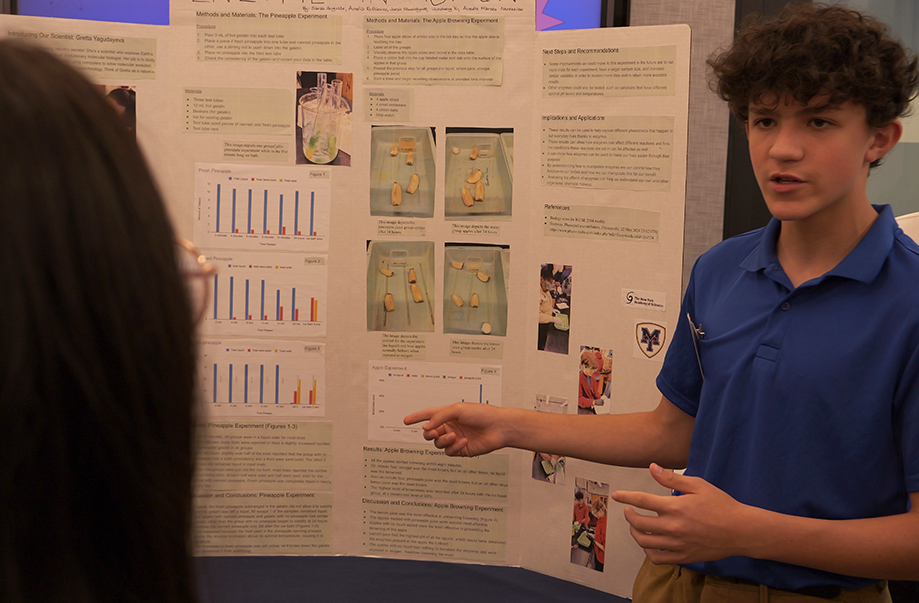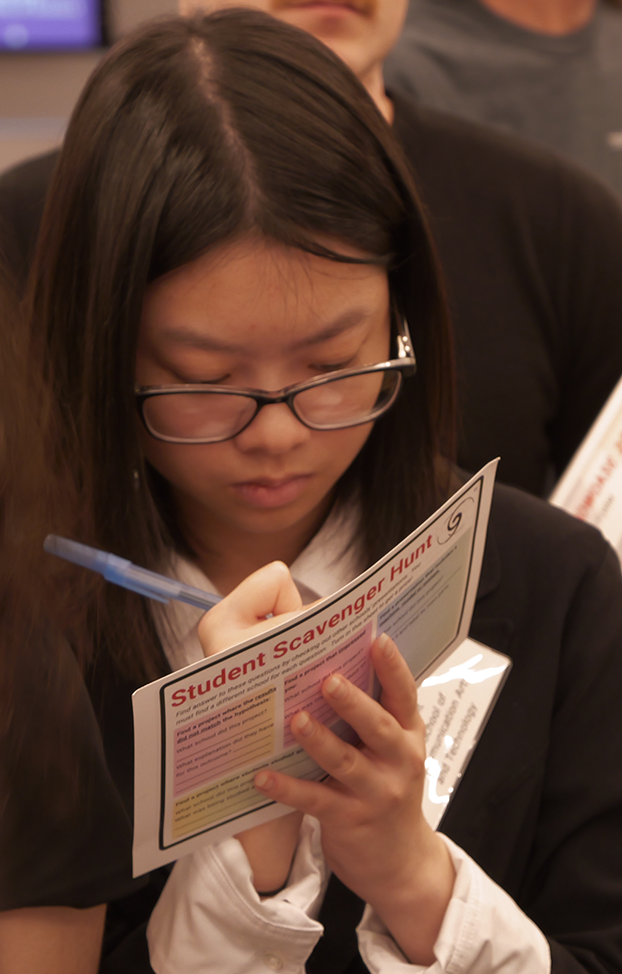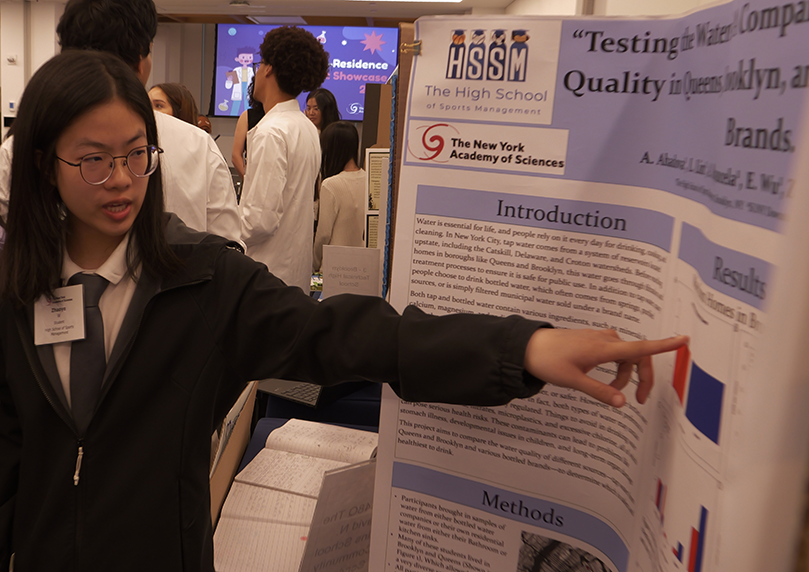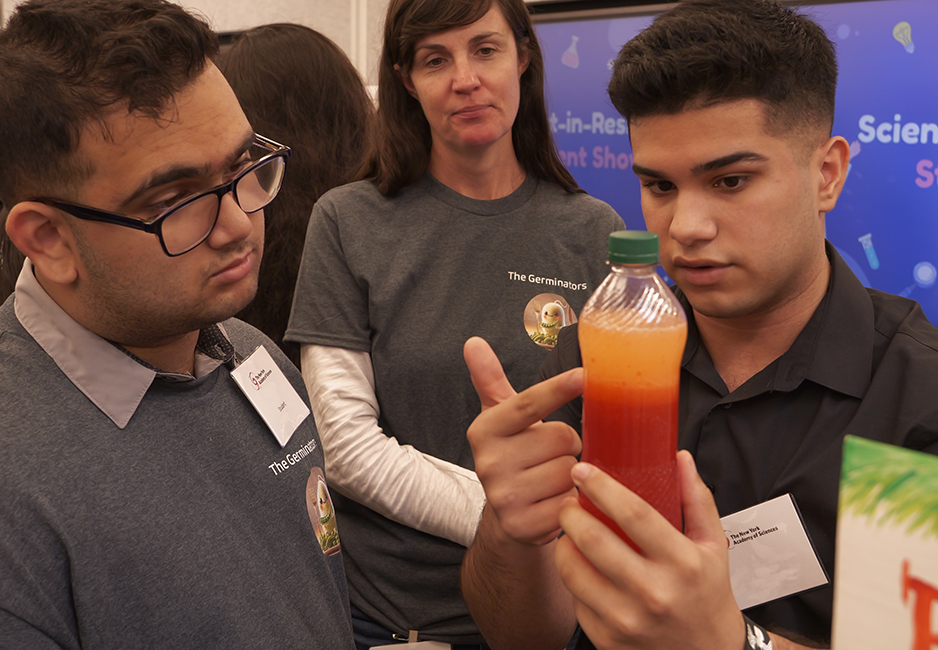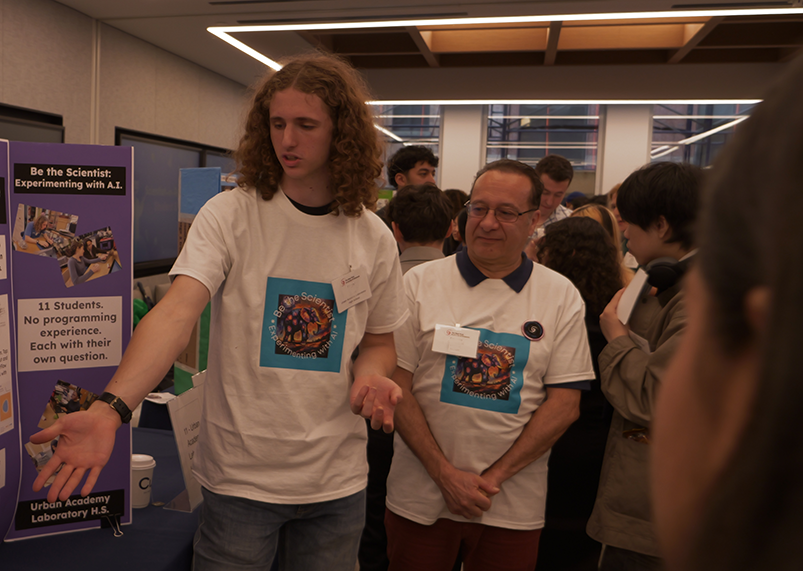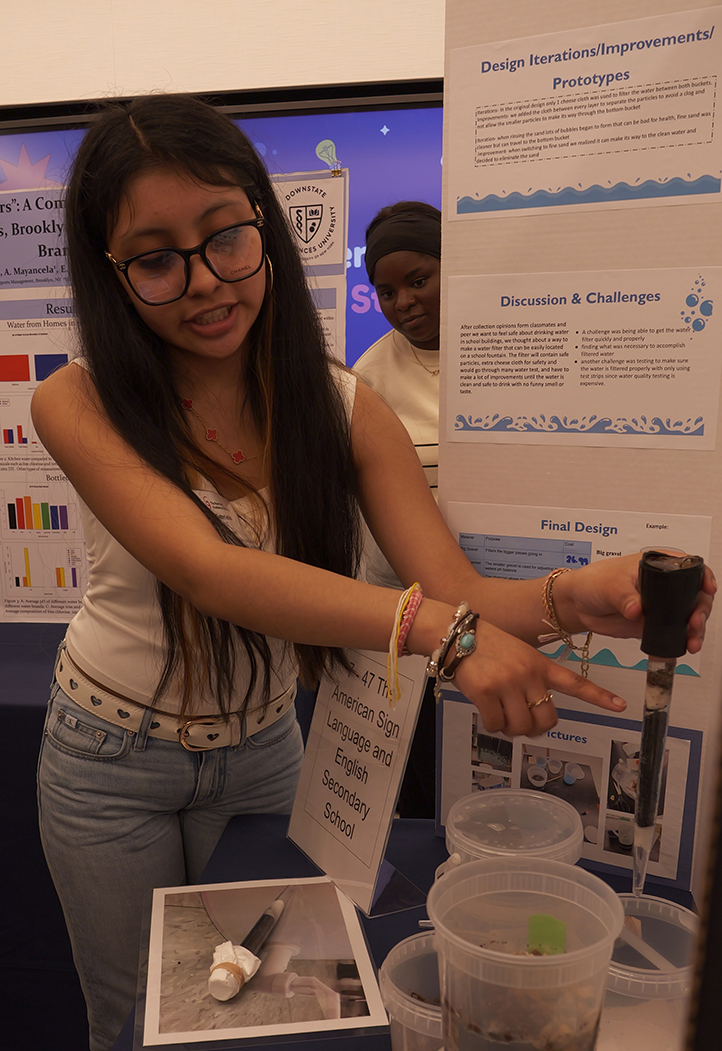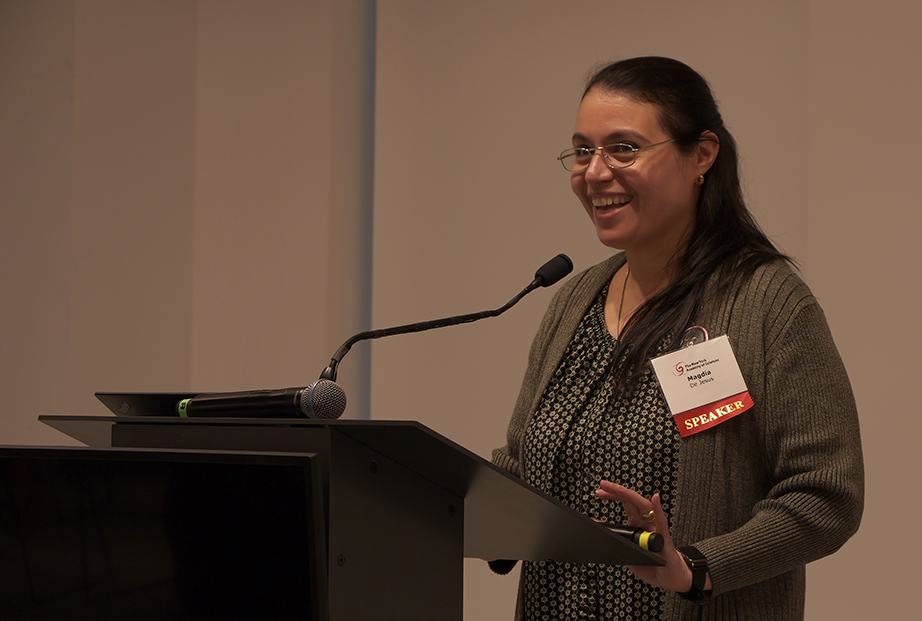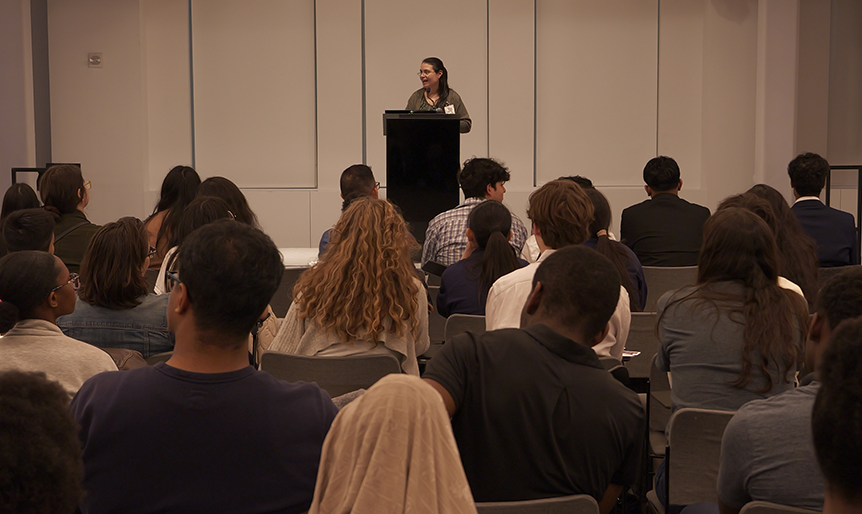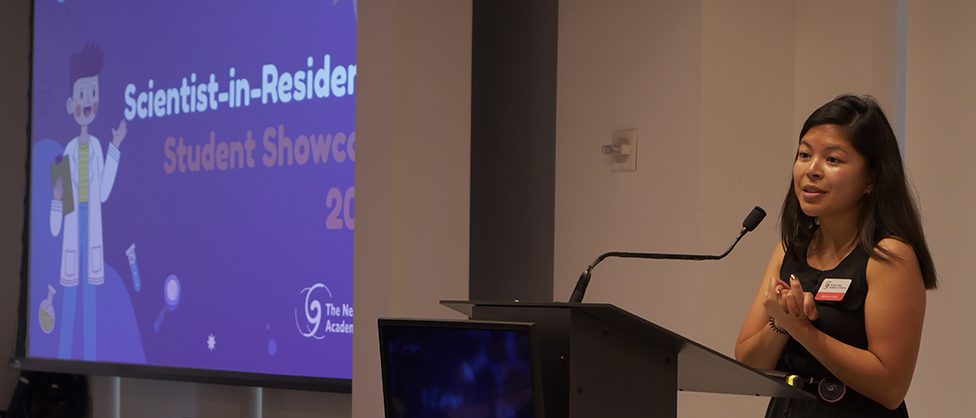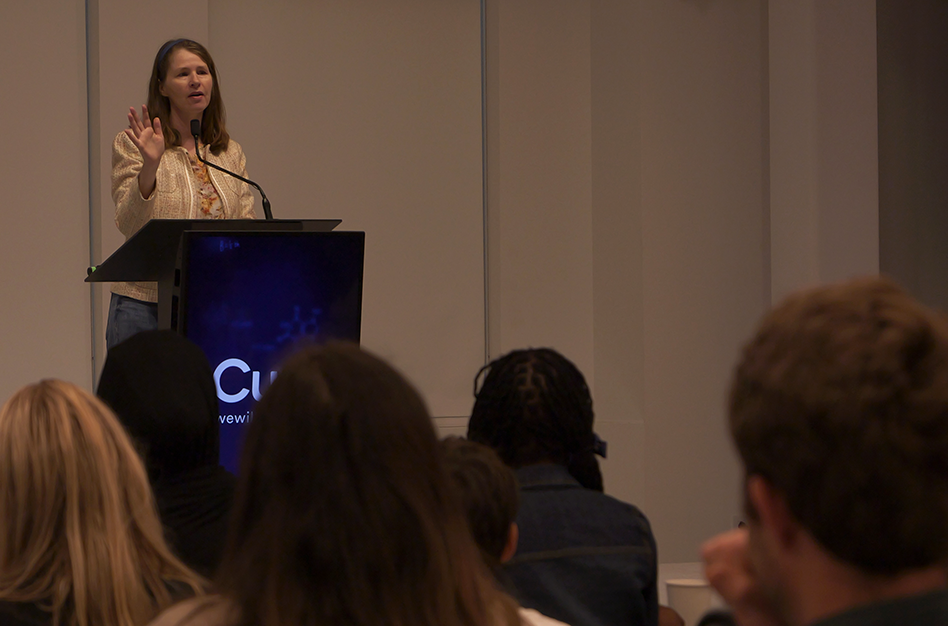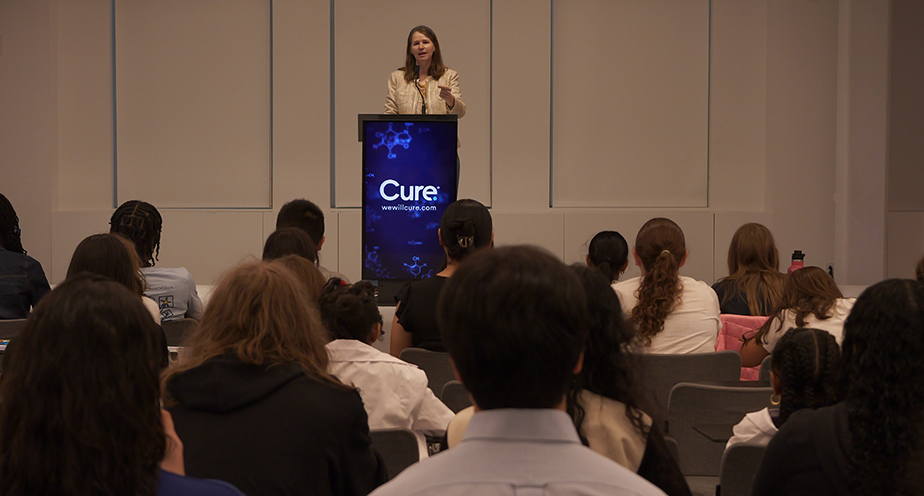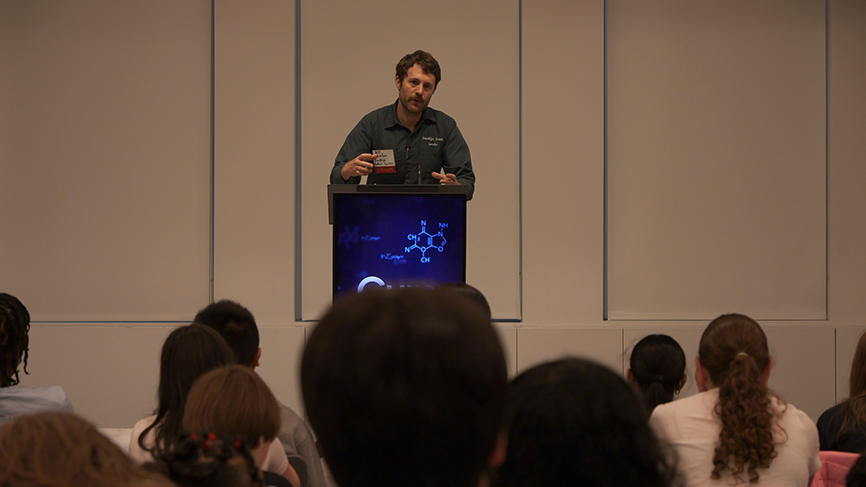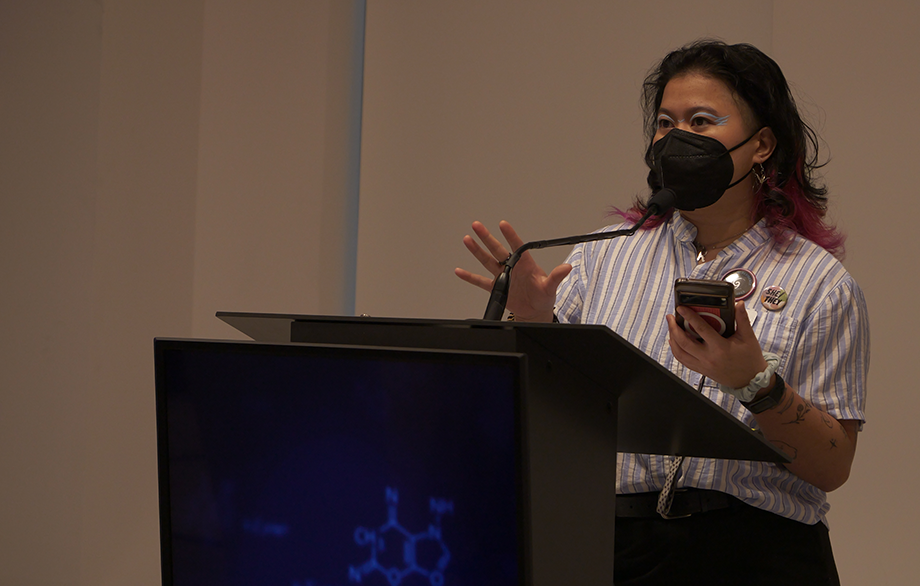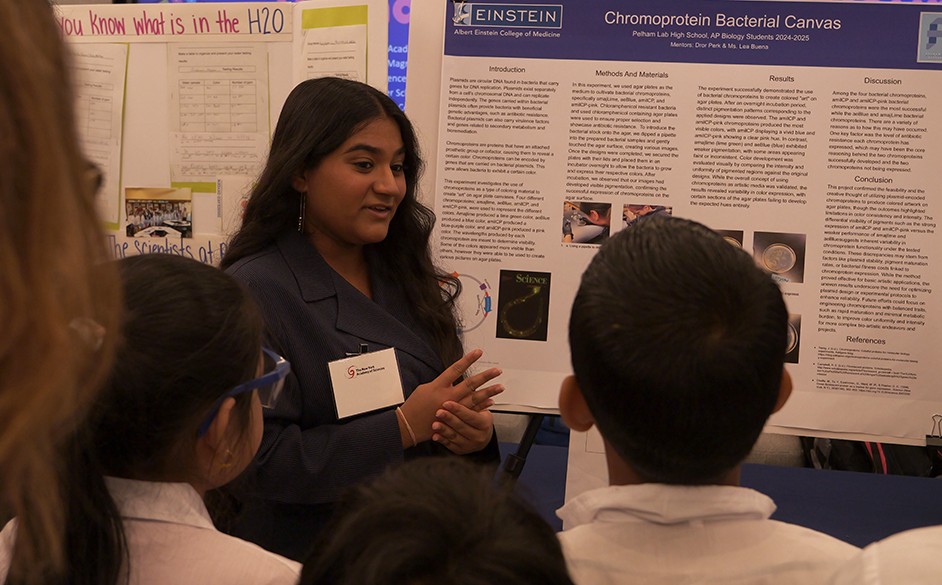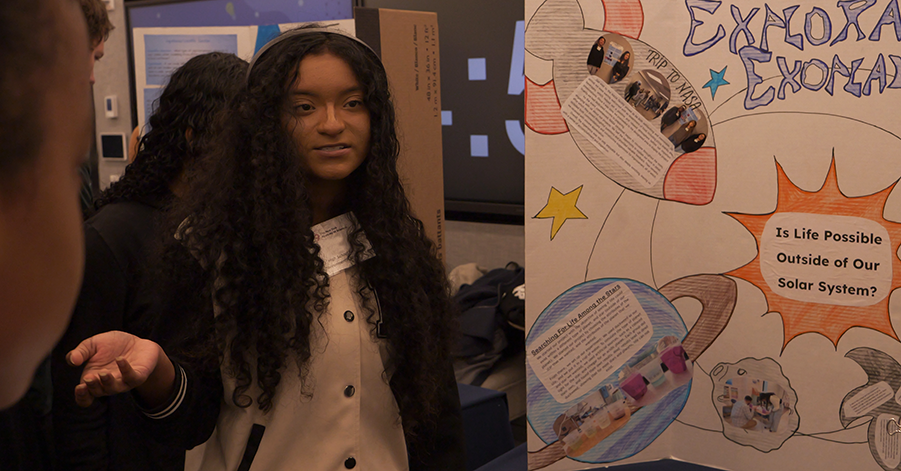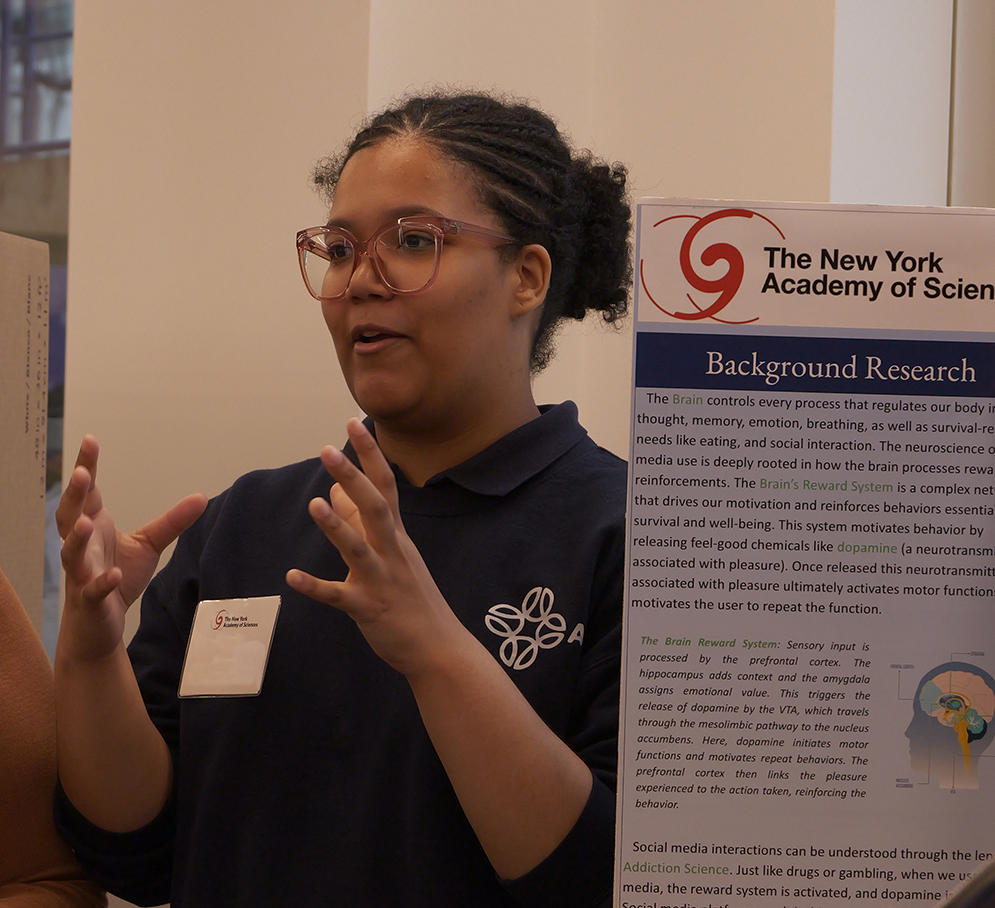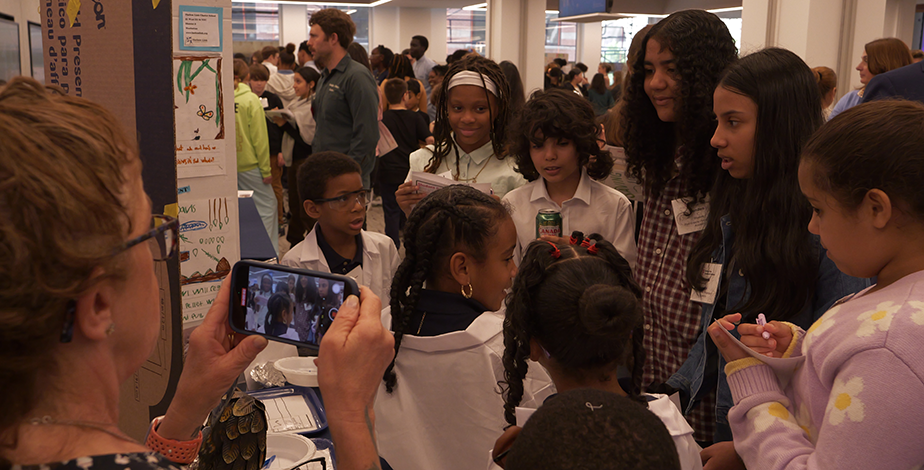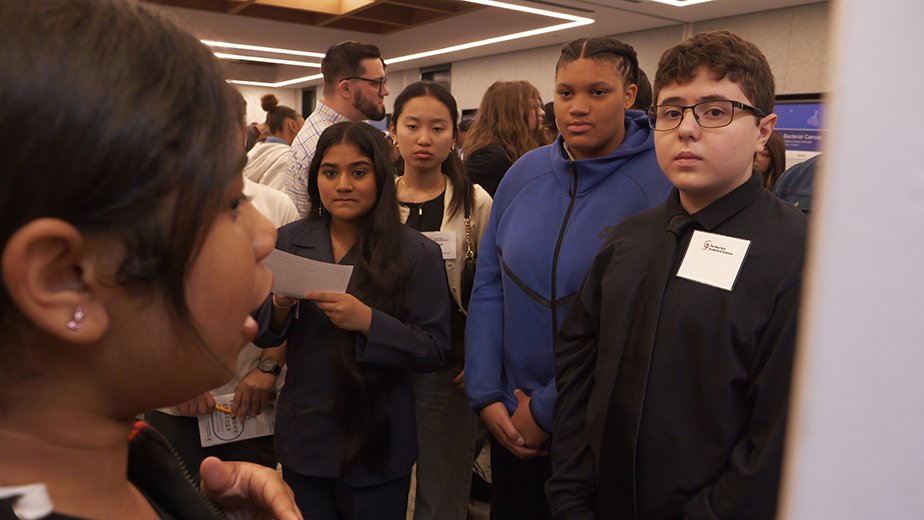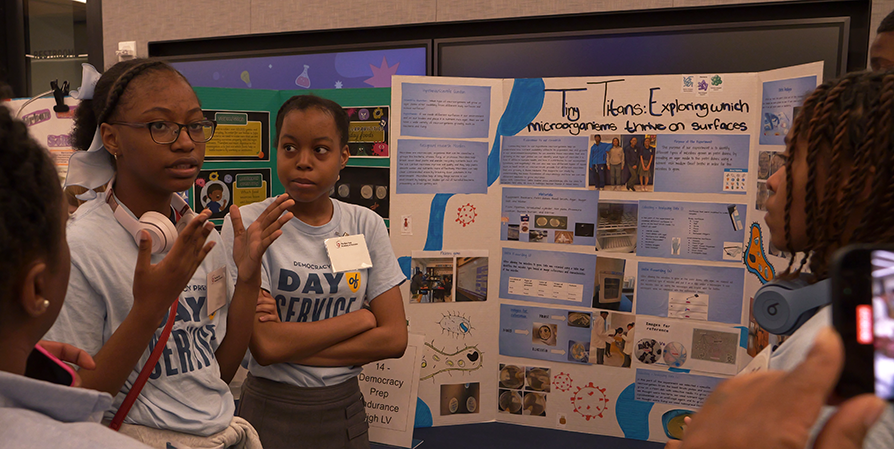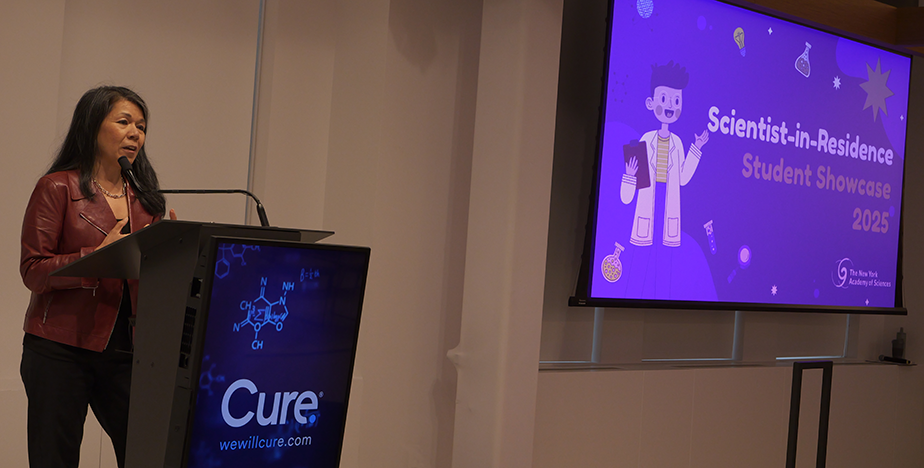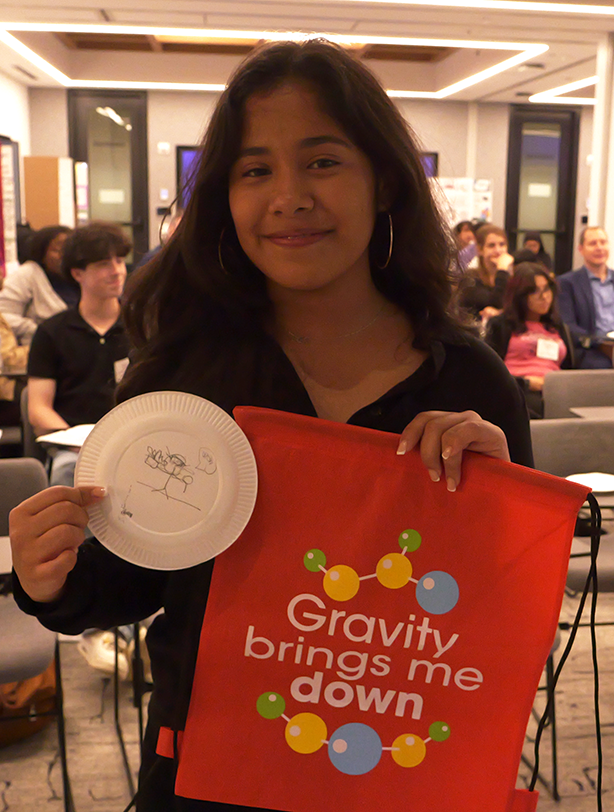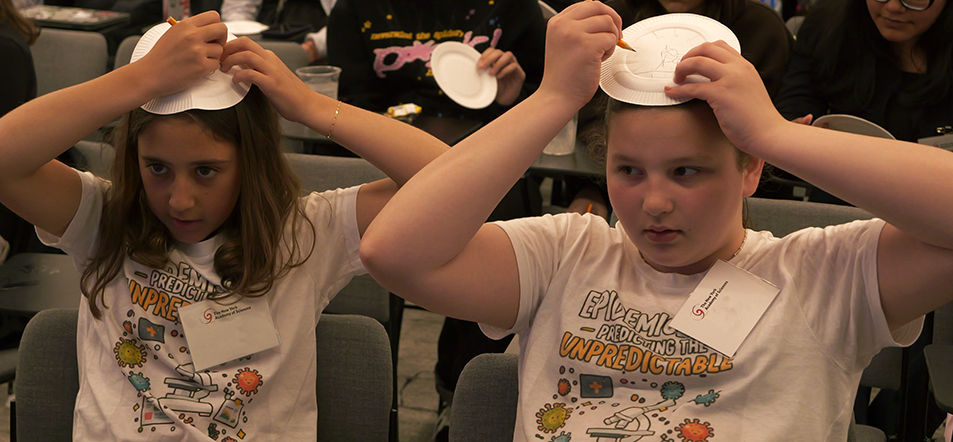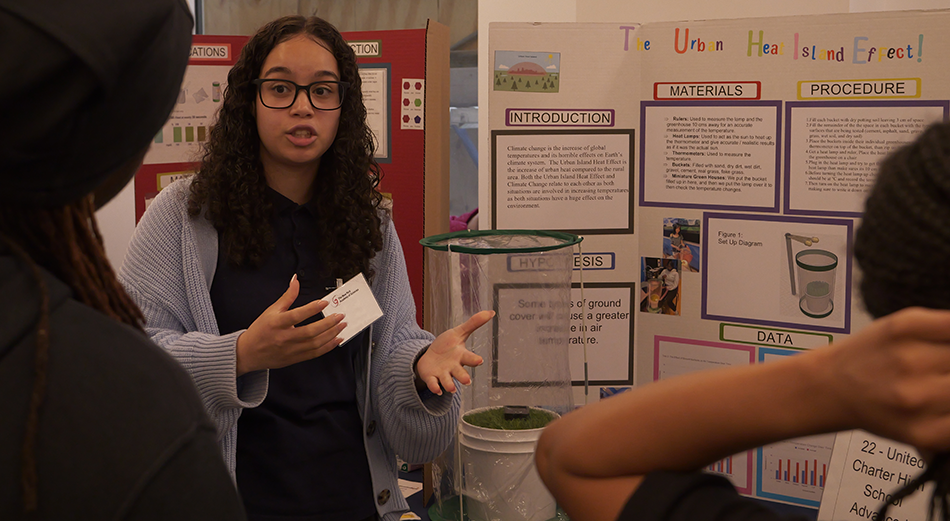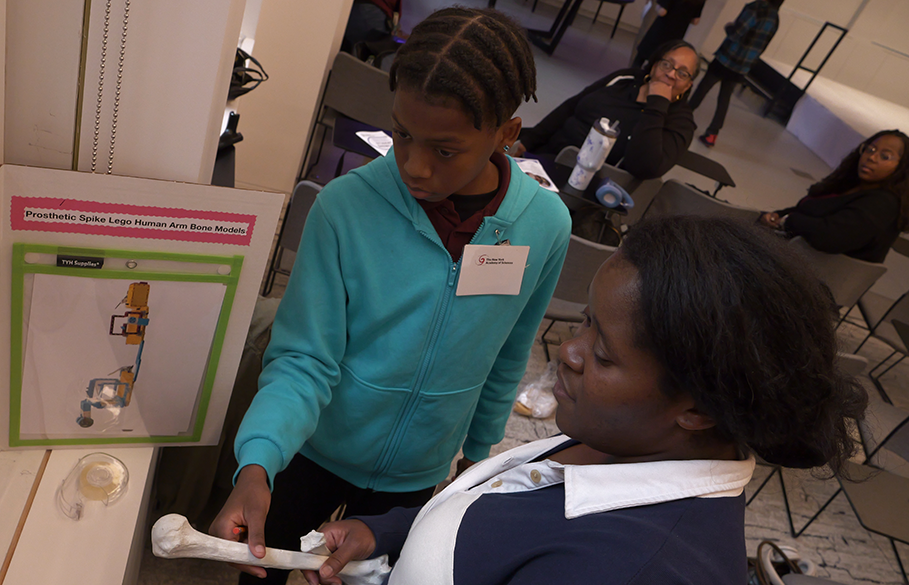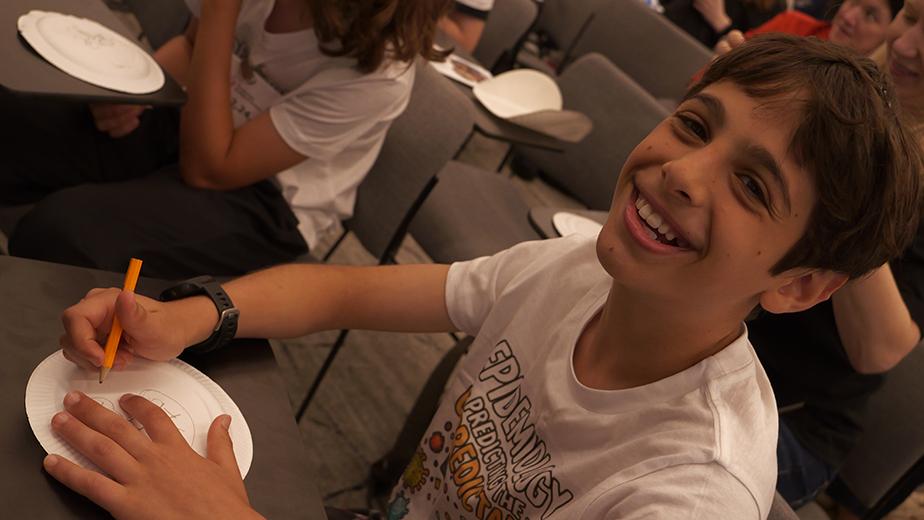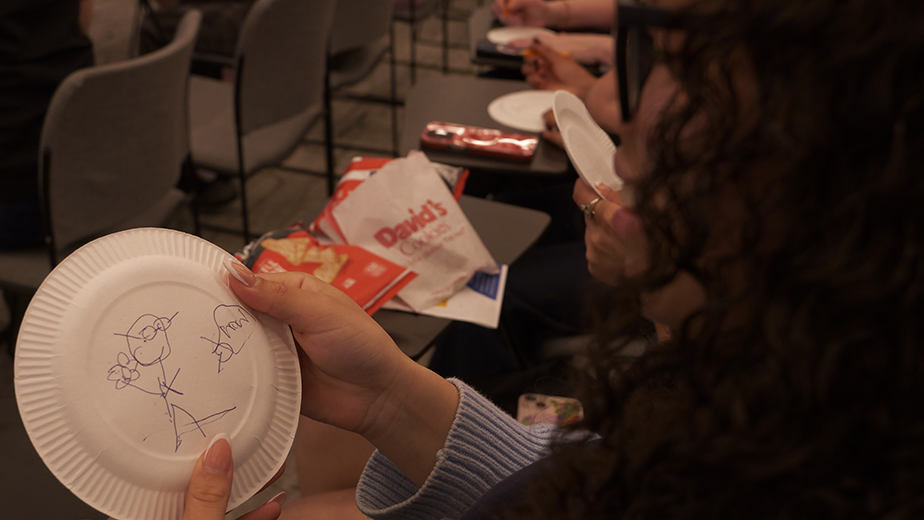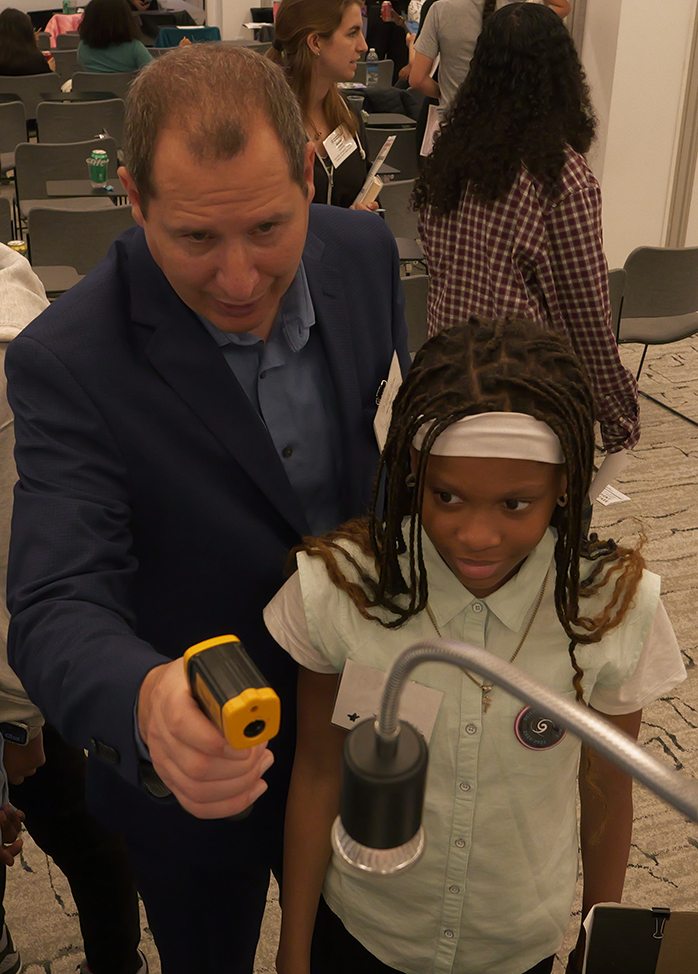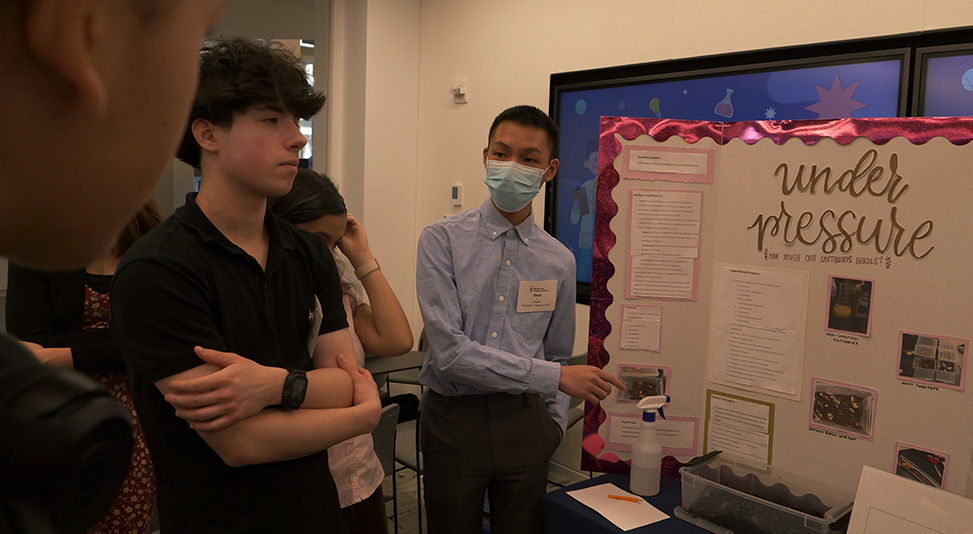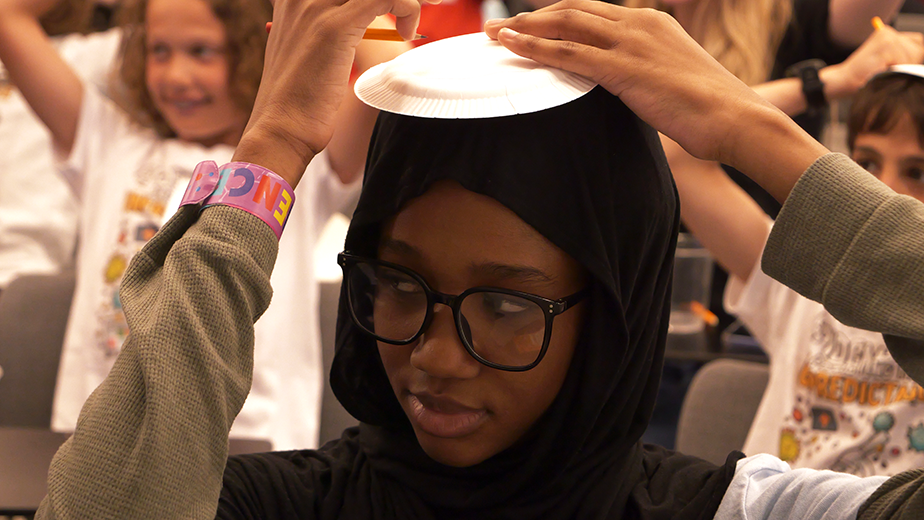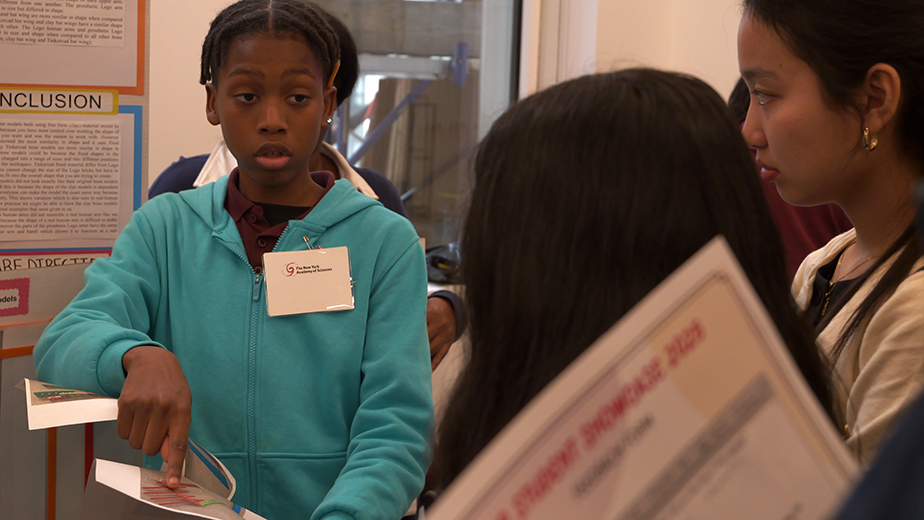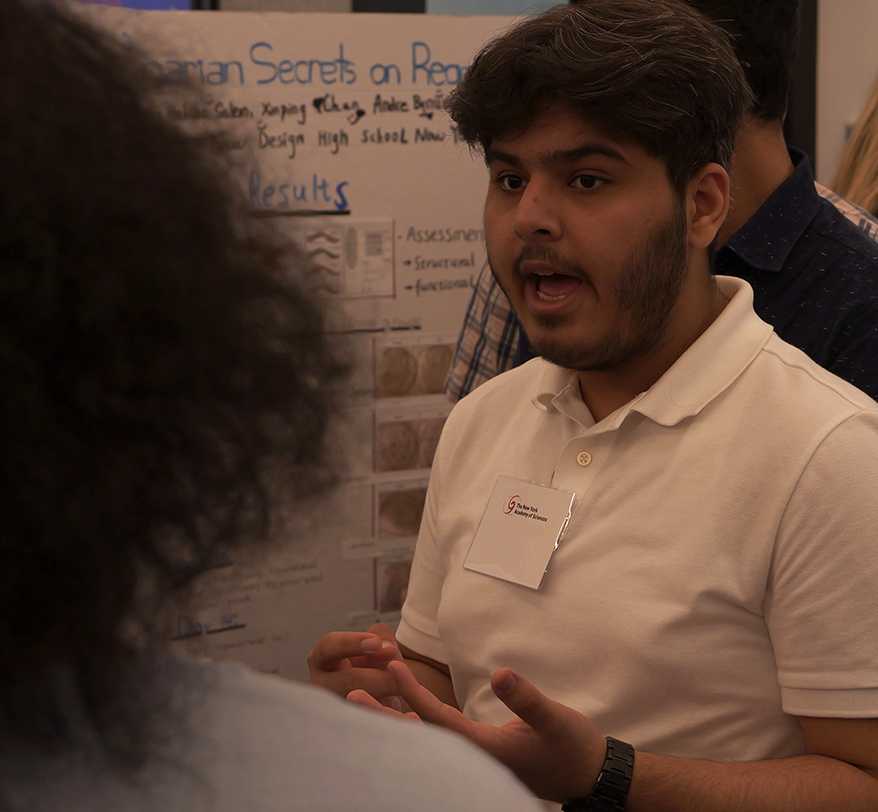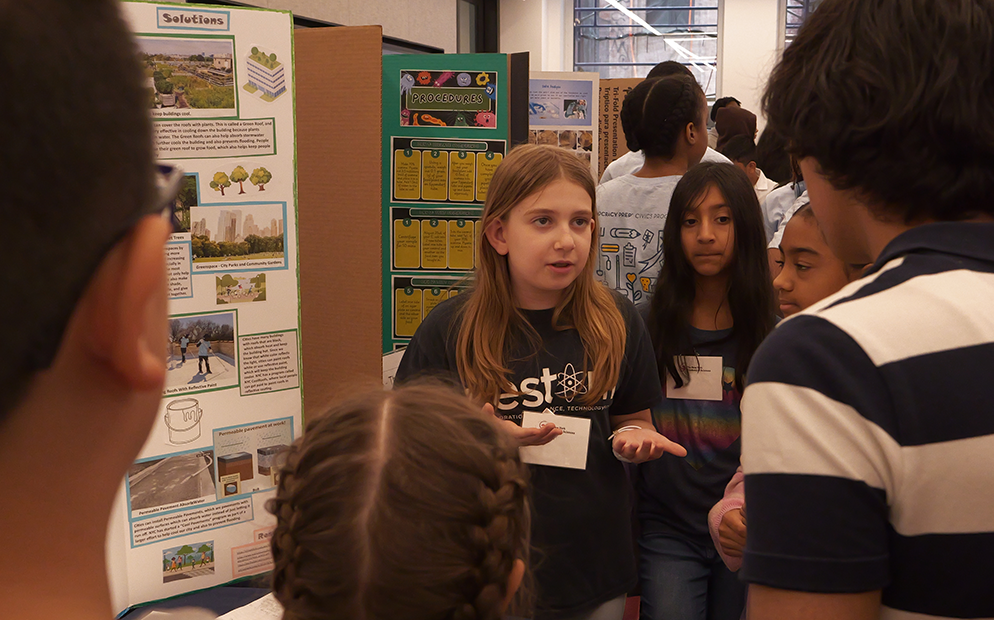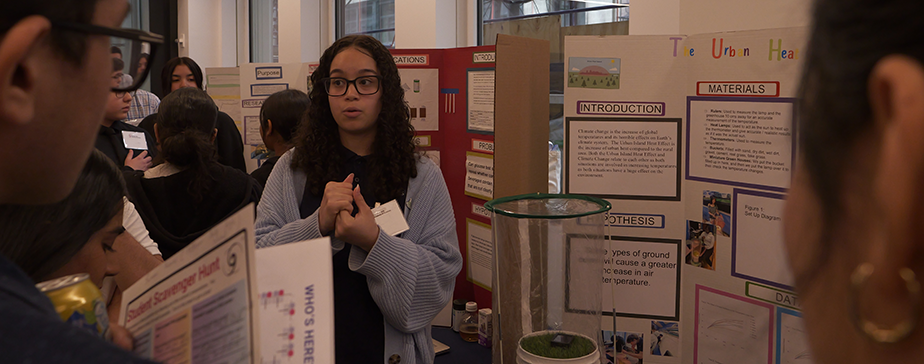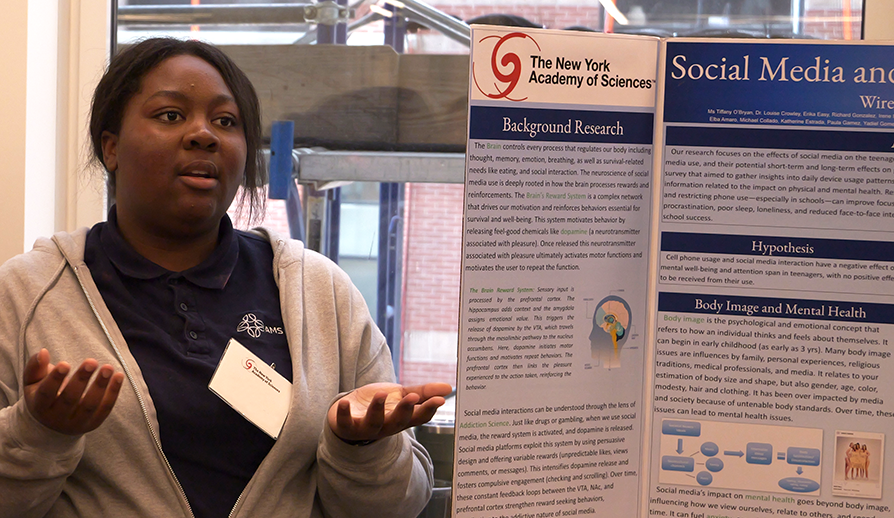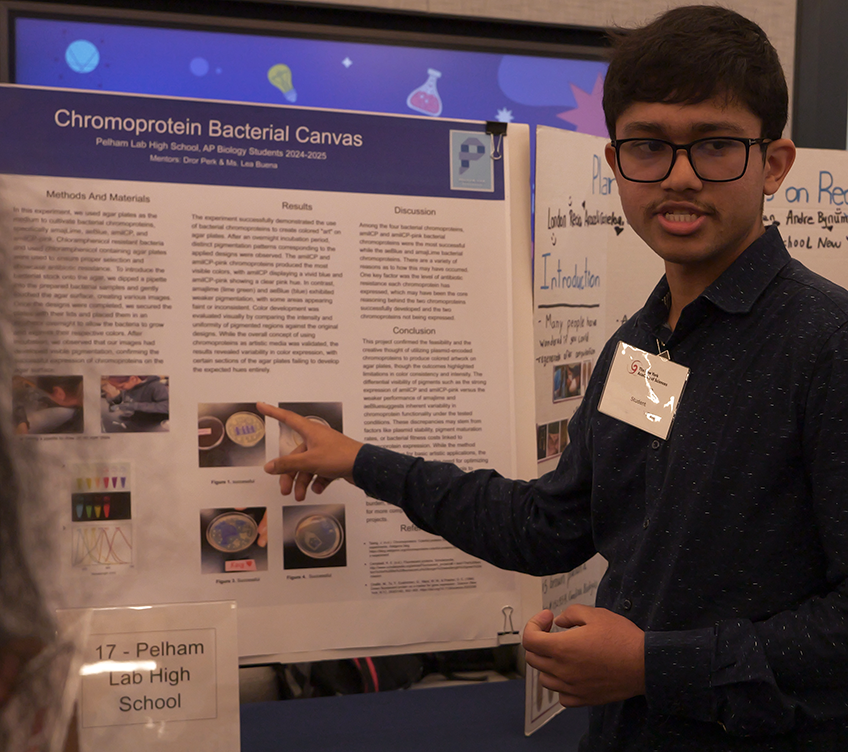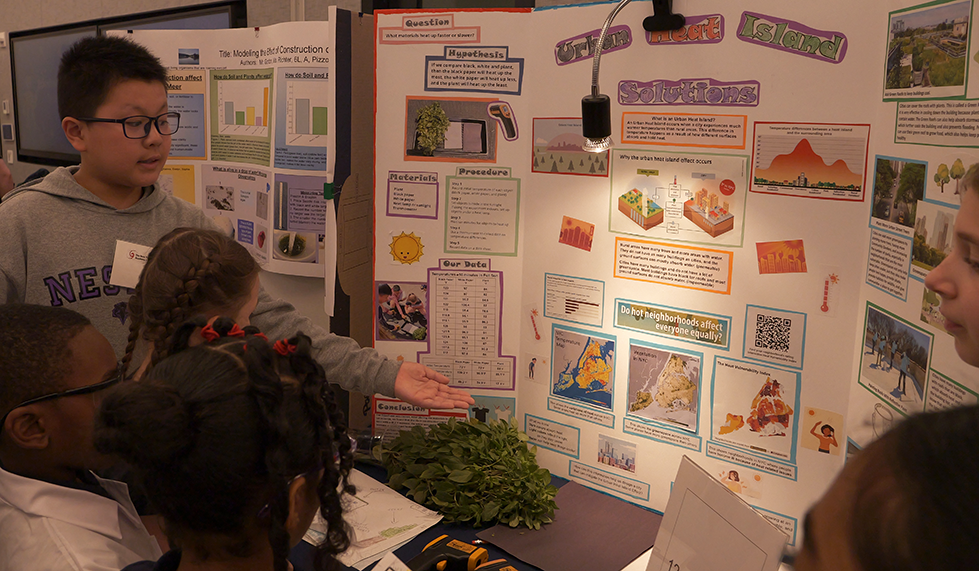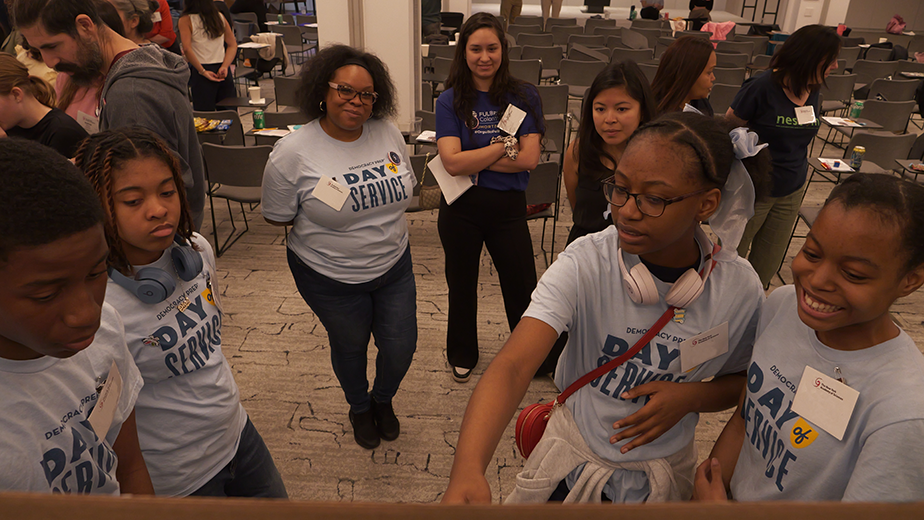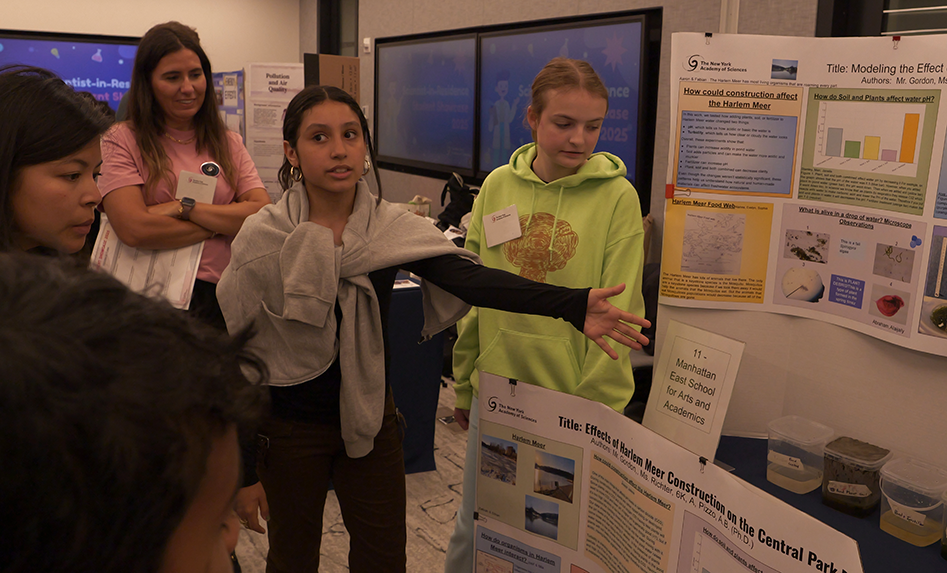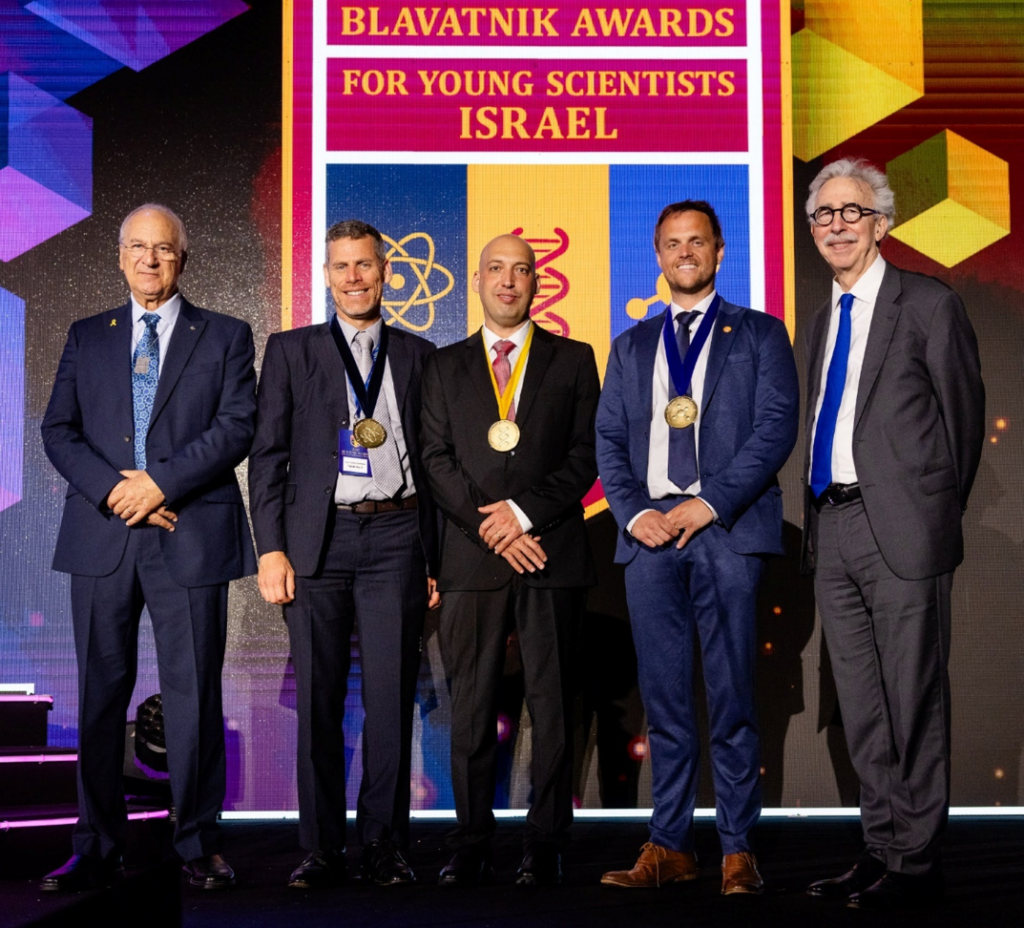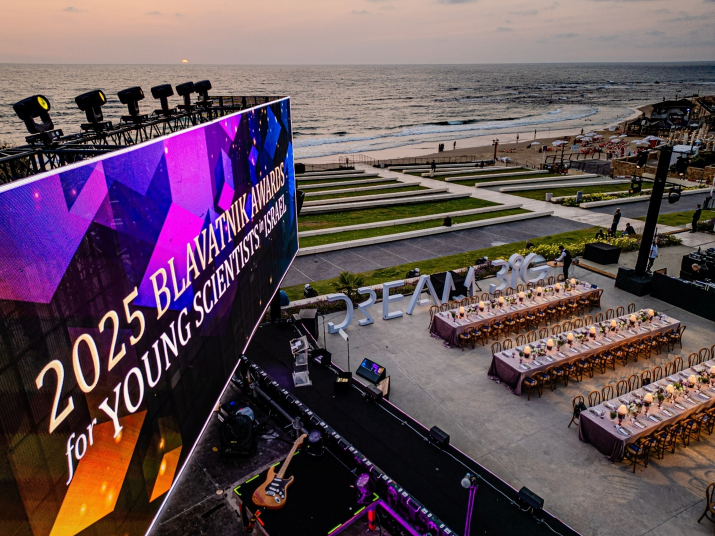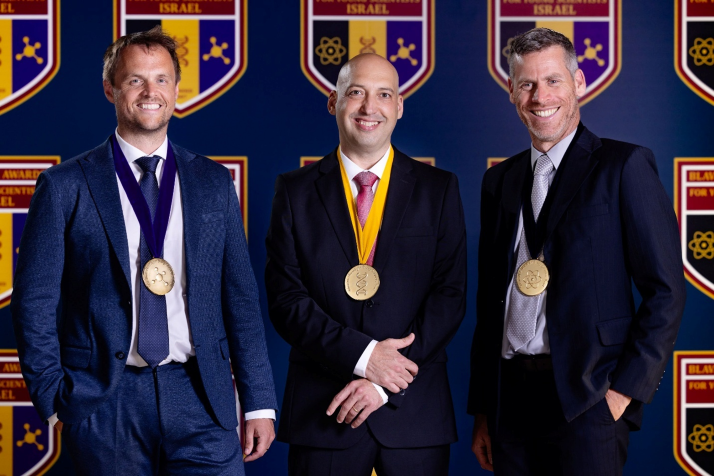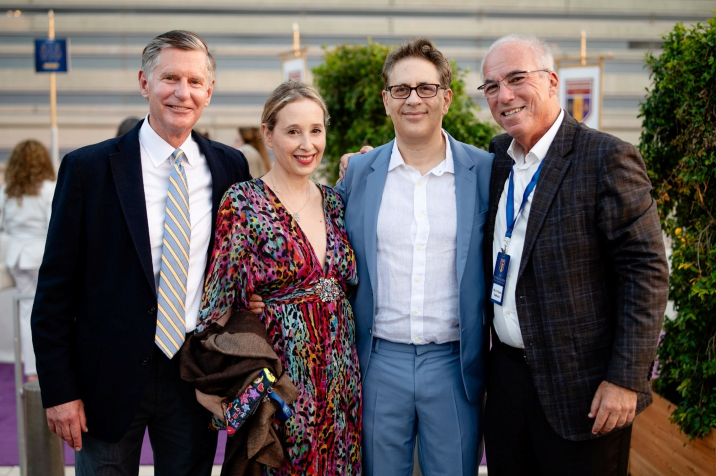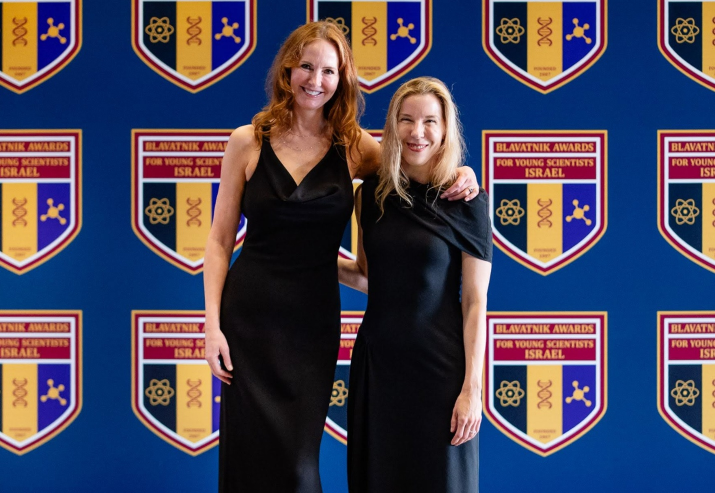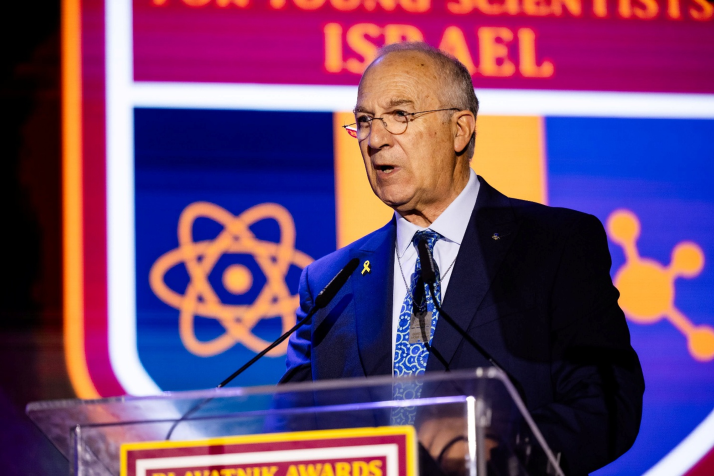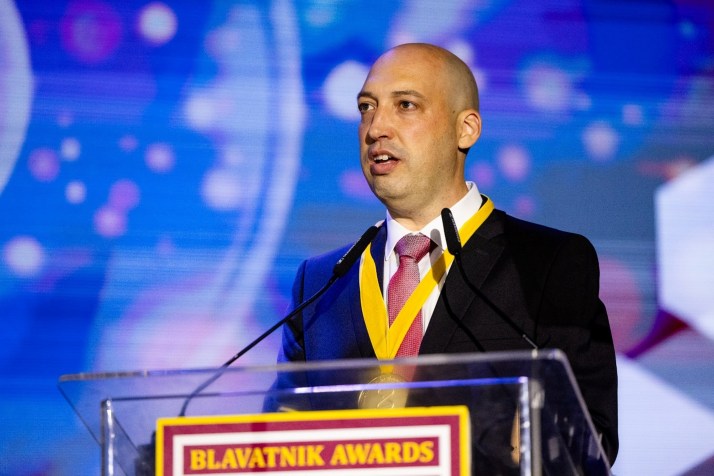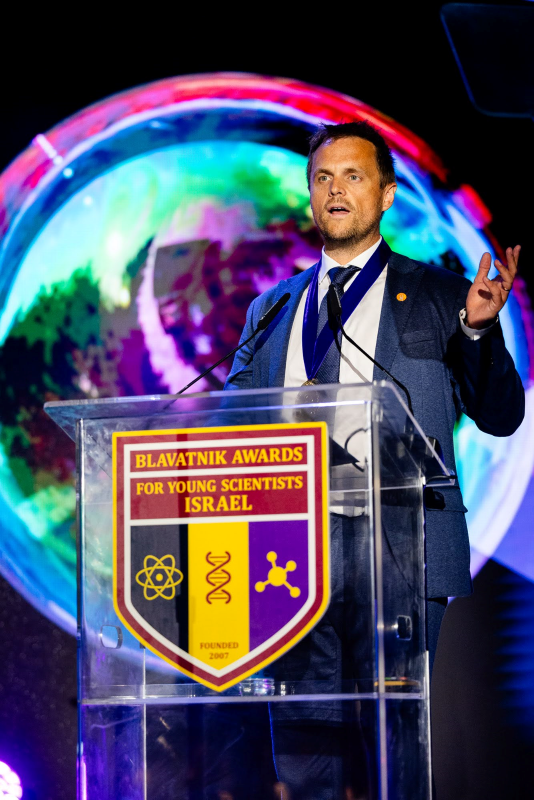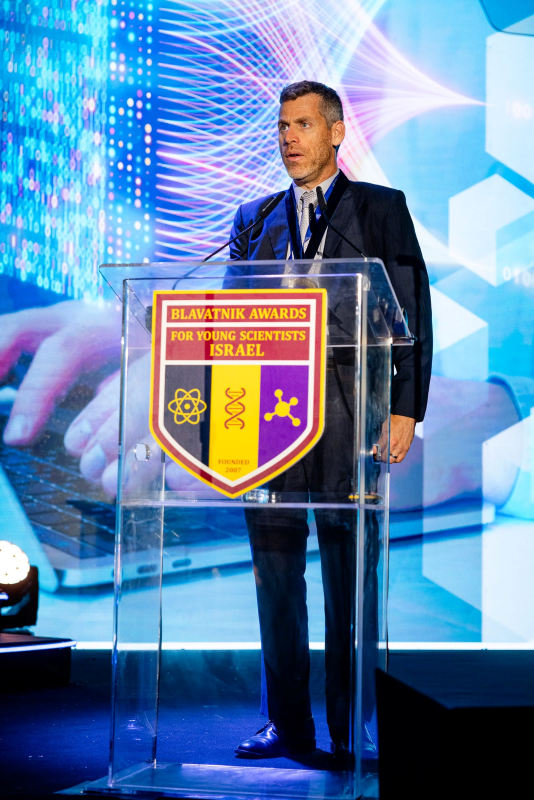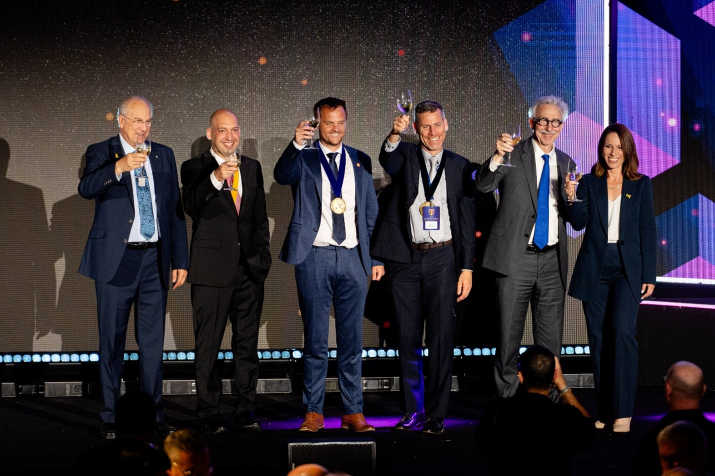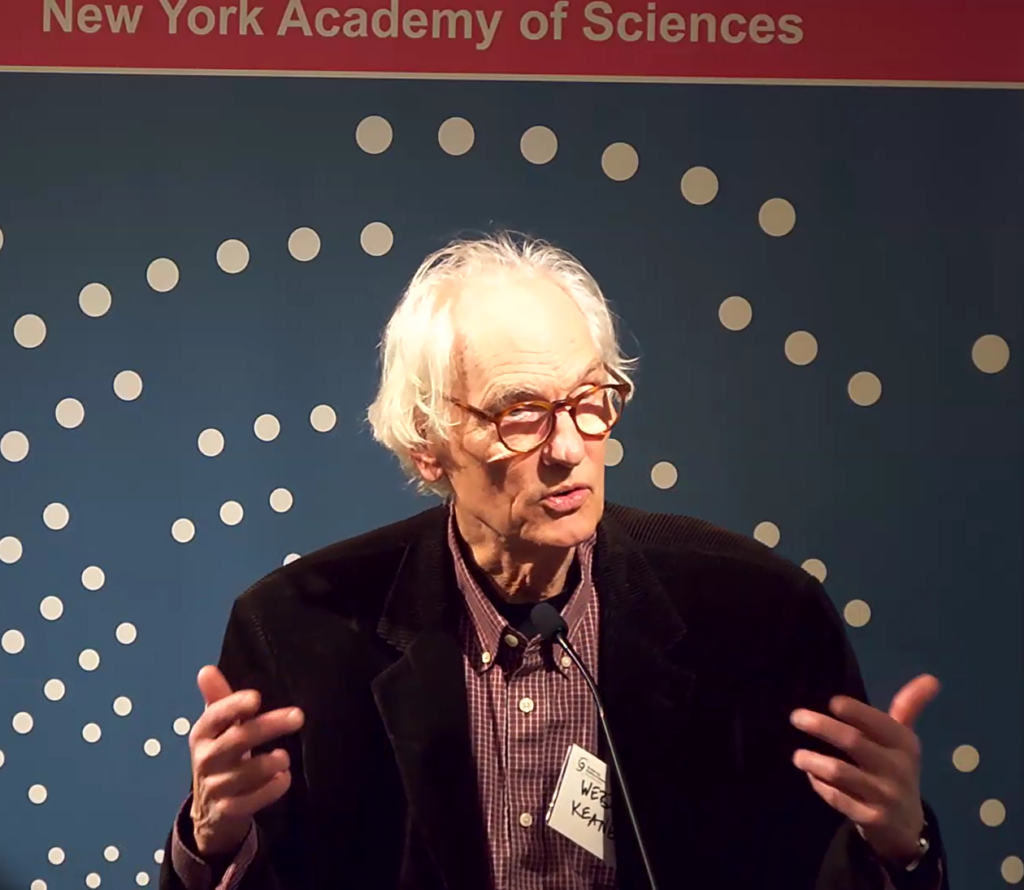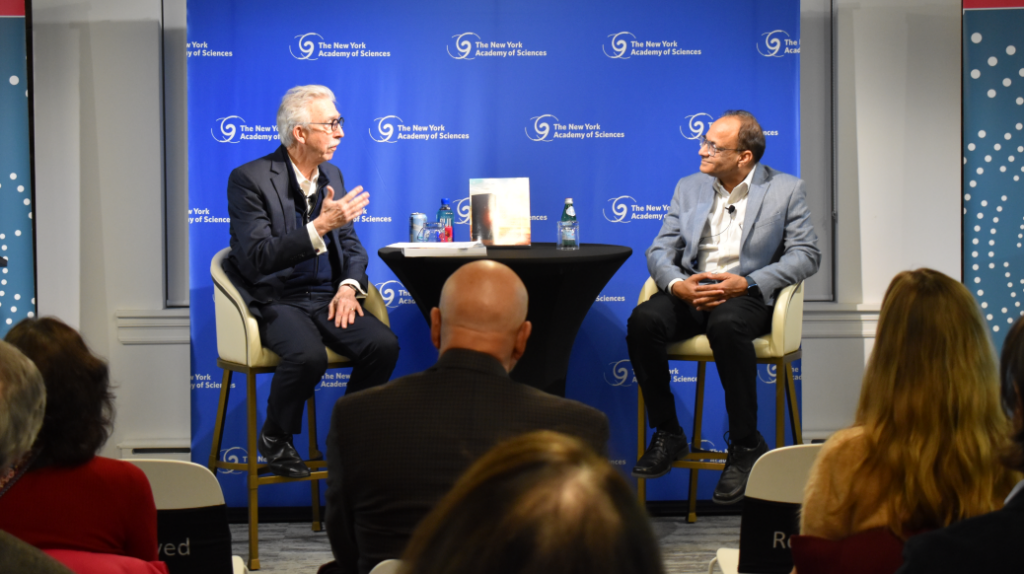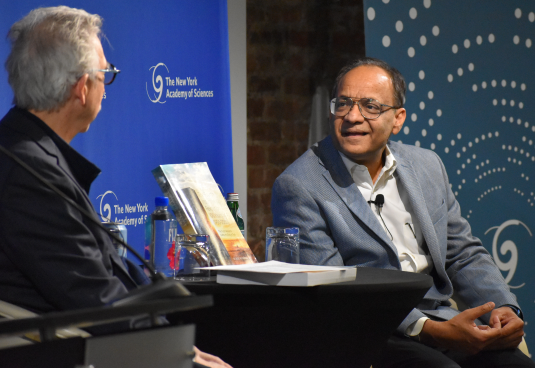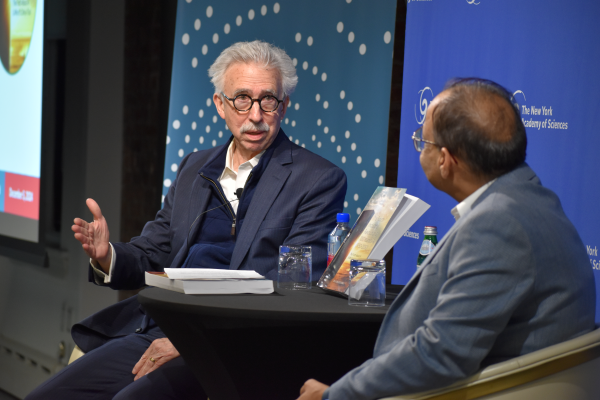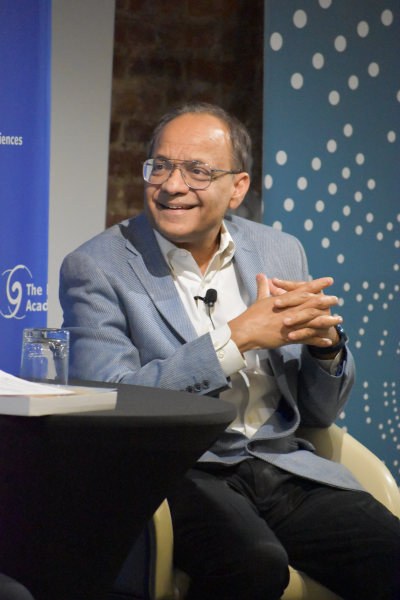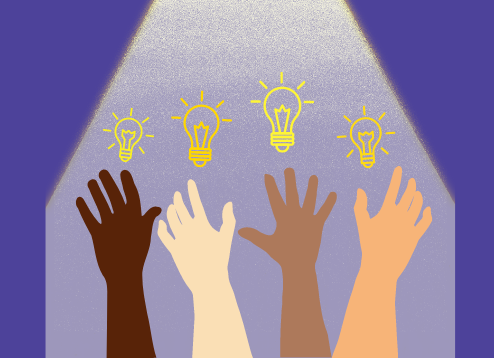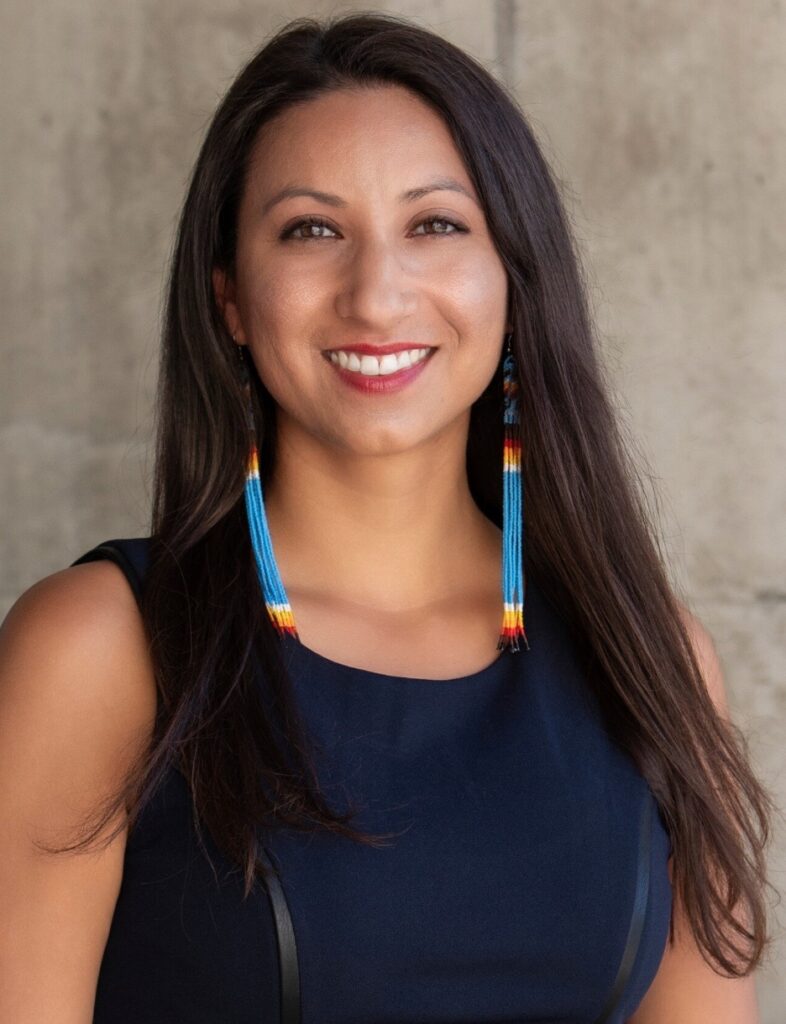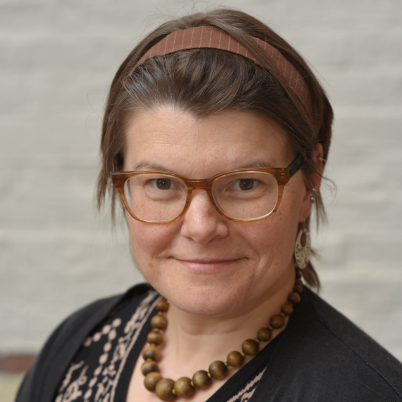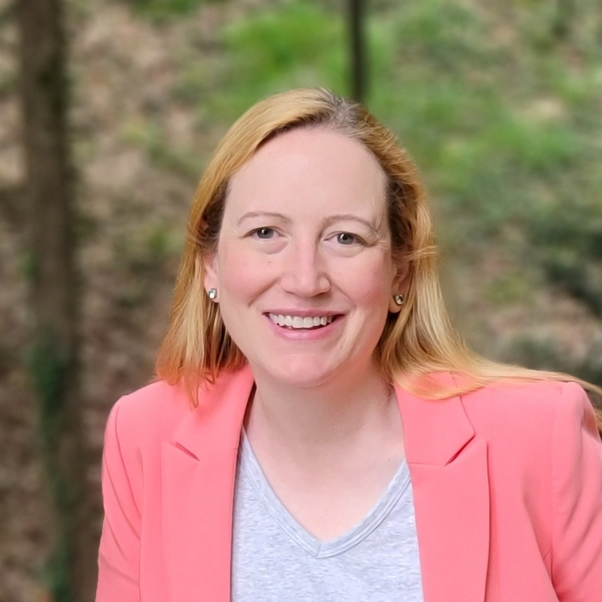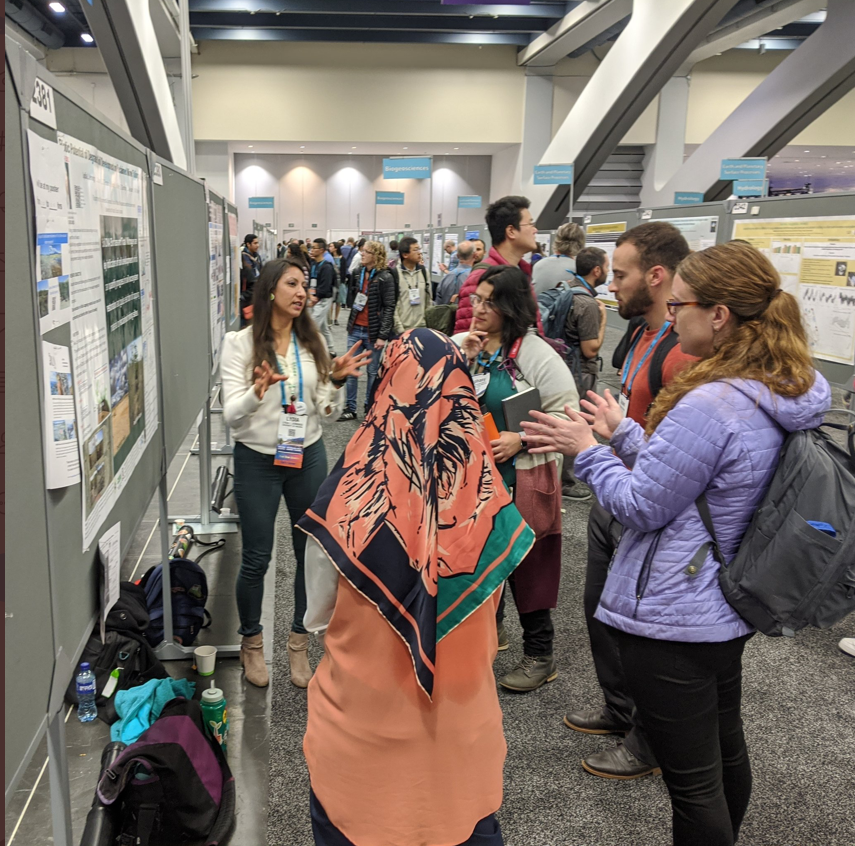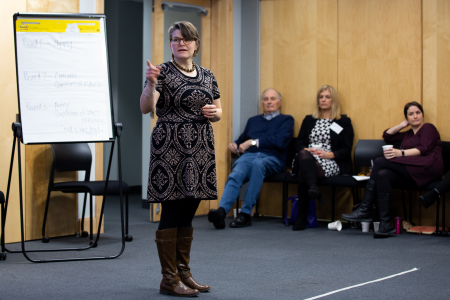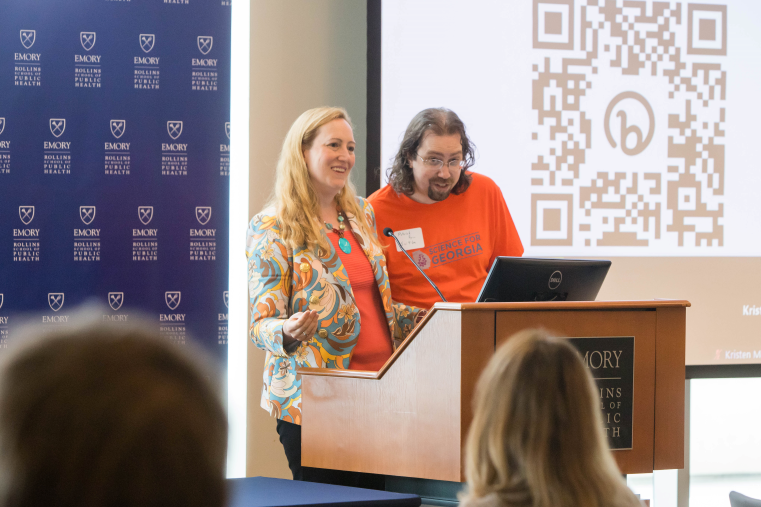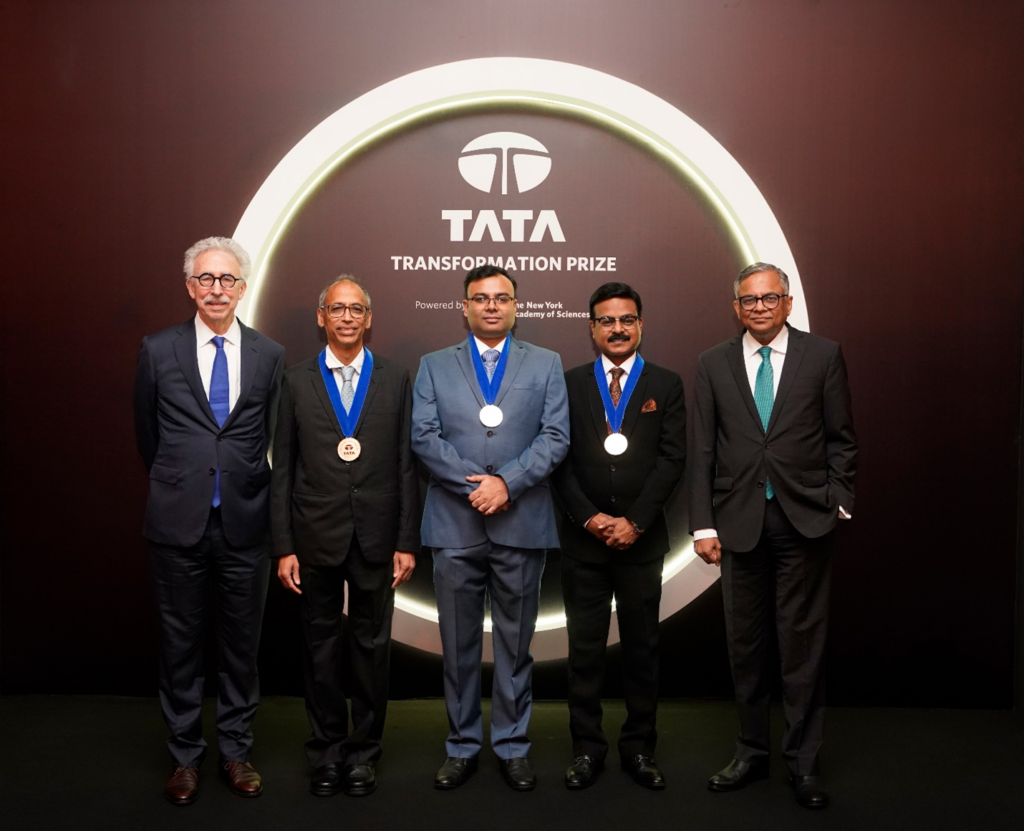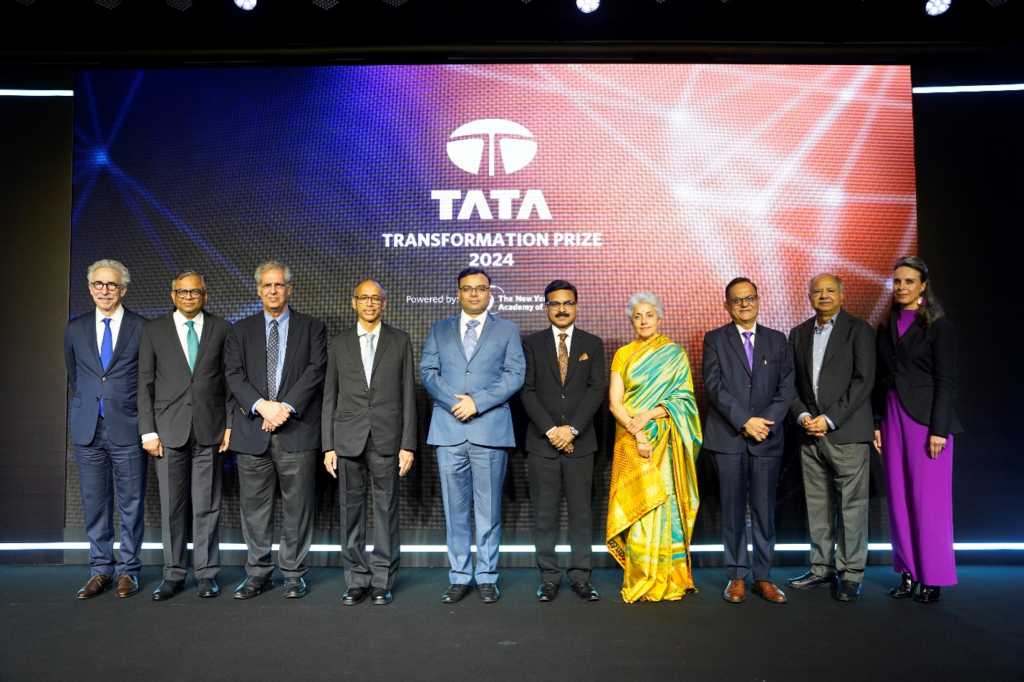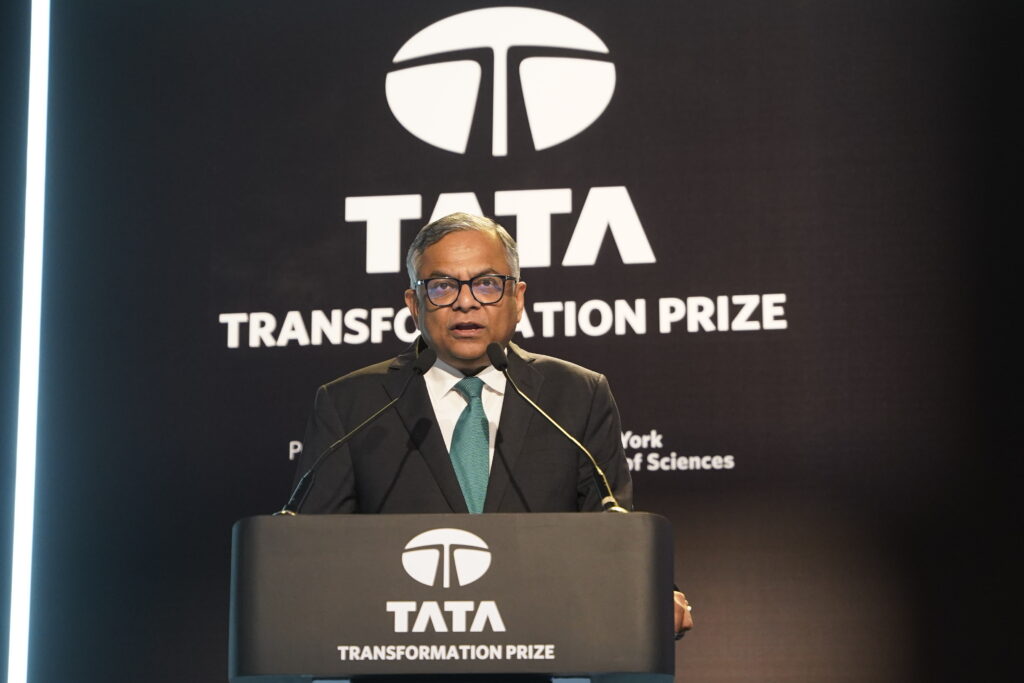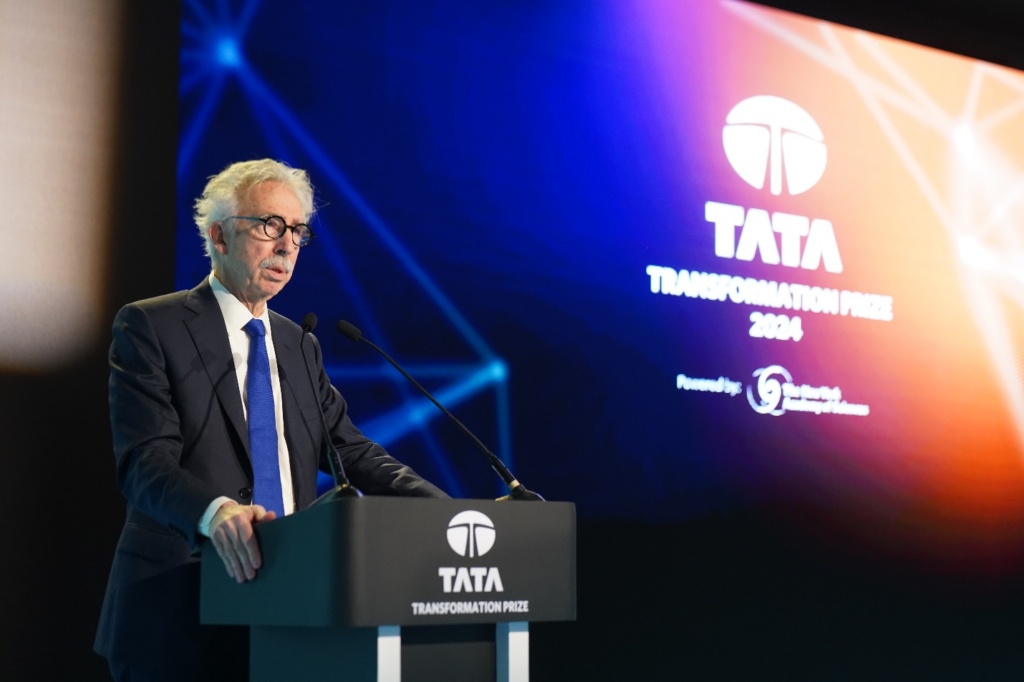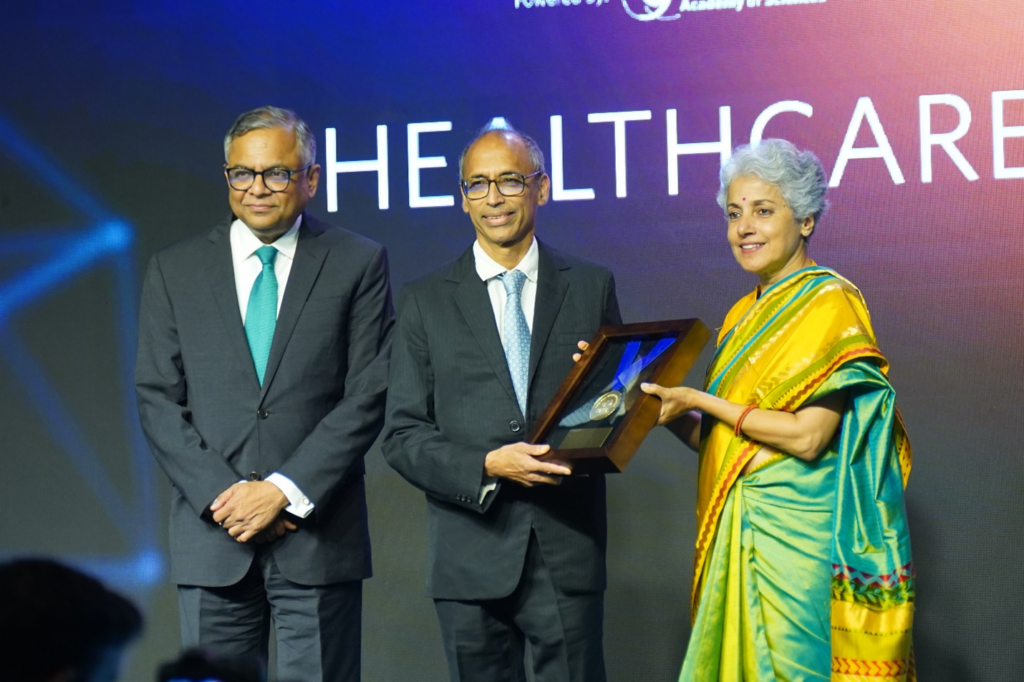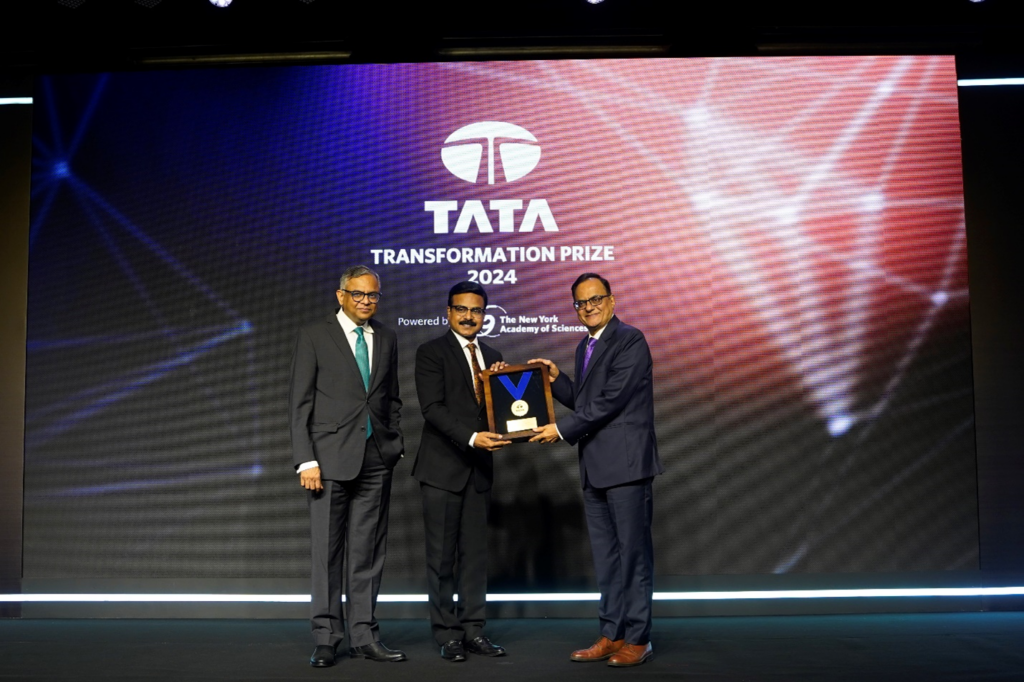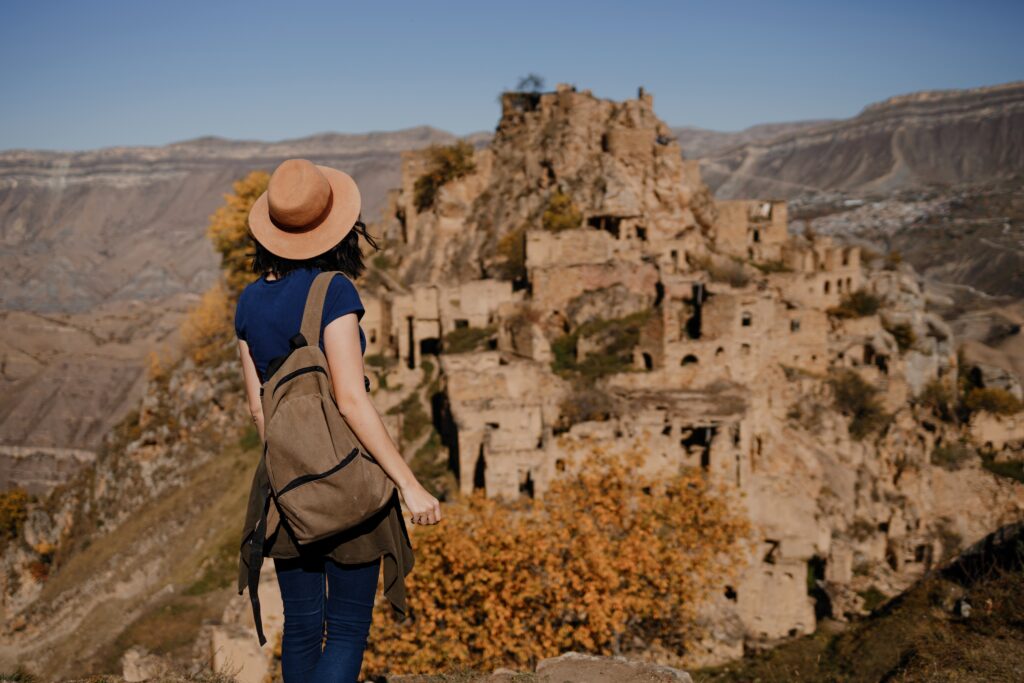
Winner of the Junior Academy Challenge – Spring 2025
“Living in the Extremes”
Sponsored by The New York Academy of Sciences
Published August 5, 2025
By Nicole Pope
Team members: Katelyn G. (Team Lead) (California, United States), Rishab S. (India), Adham M. (Egypt), Youssef I. (Egypt), Shravika S. (Virginia, United States)
Mentor: Anavi Jain (Tennessee, United States)

As record-breaking temperatures due to the climate crisis become more common around the world, especially in vulnerable regions like the Middle East, South Asia, and the southwestern United States, more than 1.2 billion people are at risk of heat stress. Areas that were already hot — such as Death Valley in California — are now experiencing conditions that regularly exceed historical records, with temperatures soaring above 134°F (56.7°C). The five international members of the winning team set themselves a clear objective: finding an innovative approach to improve the housing and living environment for communities living in scorching heat.
To devise their creative project – a housing and living concept they called Technology Architecture Infrastructure Urbanization (TAIU) – the high-school students, from the United States, Egypt, and India, held multiple online discussions, exchanging ideas across borders and time zones. In the course of their research, they learned that modern infrastructure and architecture have not kept pace with climate change. In fact, urban settings often amplify the impact of high temperatures – with asphalt and buildings made of concrete, steel, and glass retaining heat rather than deflecting it.
The team explored various building techniques and cooling methods. Historically, communities living in hot climates used passive designs, such as thick, breathable walls, shaded courtyards, and reflective surfaces to keep living spaces cool. “While my teammates leaned towards modern solutions, I advocated for a blend of traditional methods with contemporary technologies,” explains teammate Shravika S. Discussions were at times intense but always collegial while the students were developing their concept. They reached decisions democratically, under the supervision of the team’s mentor.
A Vision Emerges
From their brainstorming, a vision emerged: a sustainable project that creates a safer and more comfortable environment for people living in hot climates, without resorting to costly and energy-intensive technologies that put further strain on the planet. “By fusing ancient wisdom with future-ready innovation, TAIU offers not just shelter from the heat but a blueprint for thriving in it. With each structure we build, we’re not only cooling homes — we’re restoring hope, equity, and the possibility of a livable future for the world’s hottest regions,” the students explained in their presentation.
Inspired by Nubian architecture, their project rests on four pillars:
- 1. Smart technology – an adaptive roof that tilts and rotates to optimize ventilation, glass that tints in response to sunlight, and phase change materials that regulate indoor temperature;
- 2. Indoor design that blends Nubian pottery materials with passive cooling techniques to improve air flow and create breathable spaces;
- 3. The TAIU App – a smart home system that controls the roof and provides real-time climate and energy updates; and
- 4. Outdoor features, such as shaded areas, hydration stations, and solar-powered resilience centers that provide services and spaces where the community can gather.
“I gained valuable insight into the needs and challenges faced by the community we studied — Death Valley — where living in extreme heat demands both modern and traditional solutions,” explains teammate Adham M. “One of my biggest takeaways is realizing that blending smart technologies like smart windows and smart roofs with time-tested methods like clay construction can offer sustainable, effective ways to adapt to harsh environments.”
Conducting a Survey
To test their approach, the team consulted architects, engineers and environmental experts. A survey conducted among 248 people living in hot regions yielded useful suggestions that the team applied to finetune their design, such as expanding the use of clay insulation and rerouting cooling pipes within wall cavities. Early results from laboratory and field tests of traditional pottery composites confirmed that special clay blends can reduce indoor peak temperatures by up to 5oF.
While working on their project, the students gained new insights into the devastating effects of climate change. “I realized that air conditioning is affecting not only my life but also those who are yet to come,” says team member Rishab S. “I adopted several measures to reduce the use of air-conditioners. I started wearing lighter clothes, consuming drinks that cool down our bodies, and using windows for proper ventilation.”
Team member Youssef I. feels he has acquired new knowledge and skills, including a deeper understanding of modelling since he was responsible for producing the 3D housing model. But he also emphasizes many other benefits, such as communicating with people from different communities and cultural backgrounds and forming new friendships. For team leader Katelyn G., this Junior Academy Challenge was more than an academic experience. “It was a glimpse into the kind of changemaker I strive to become,” she explains. “From the very beginning, we weren’t just building a climate resilience solution; we were building trust across time zones, merging perspectives, and learning to lead with both head and heart.”
